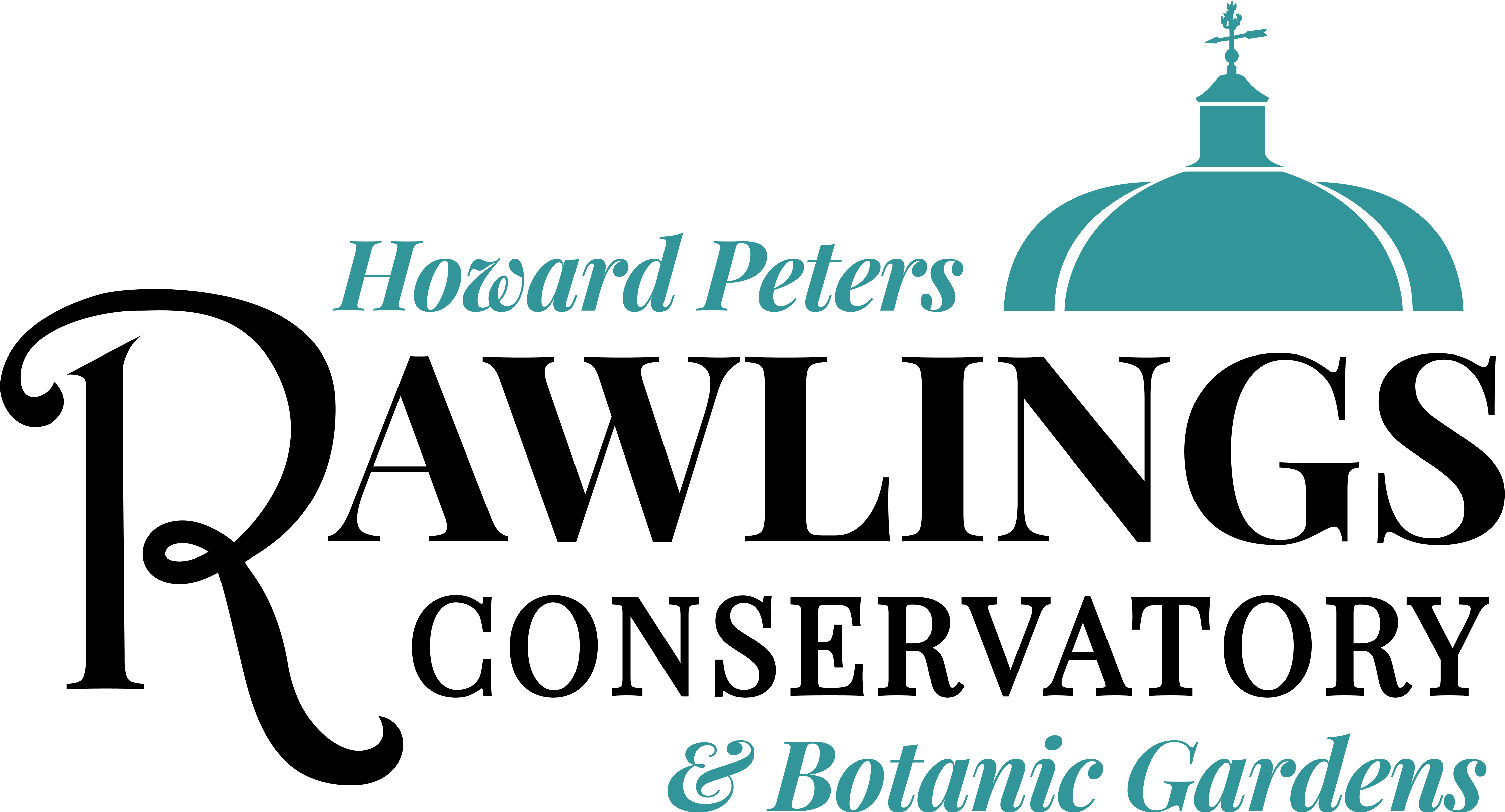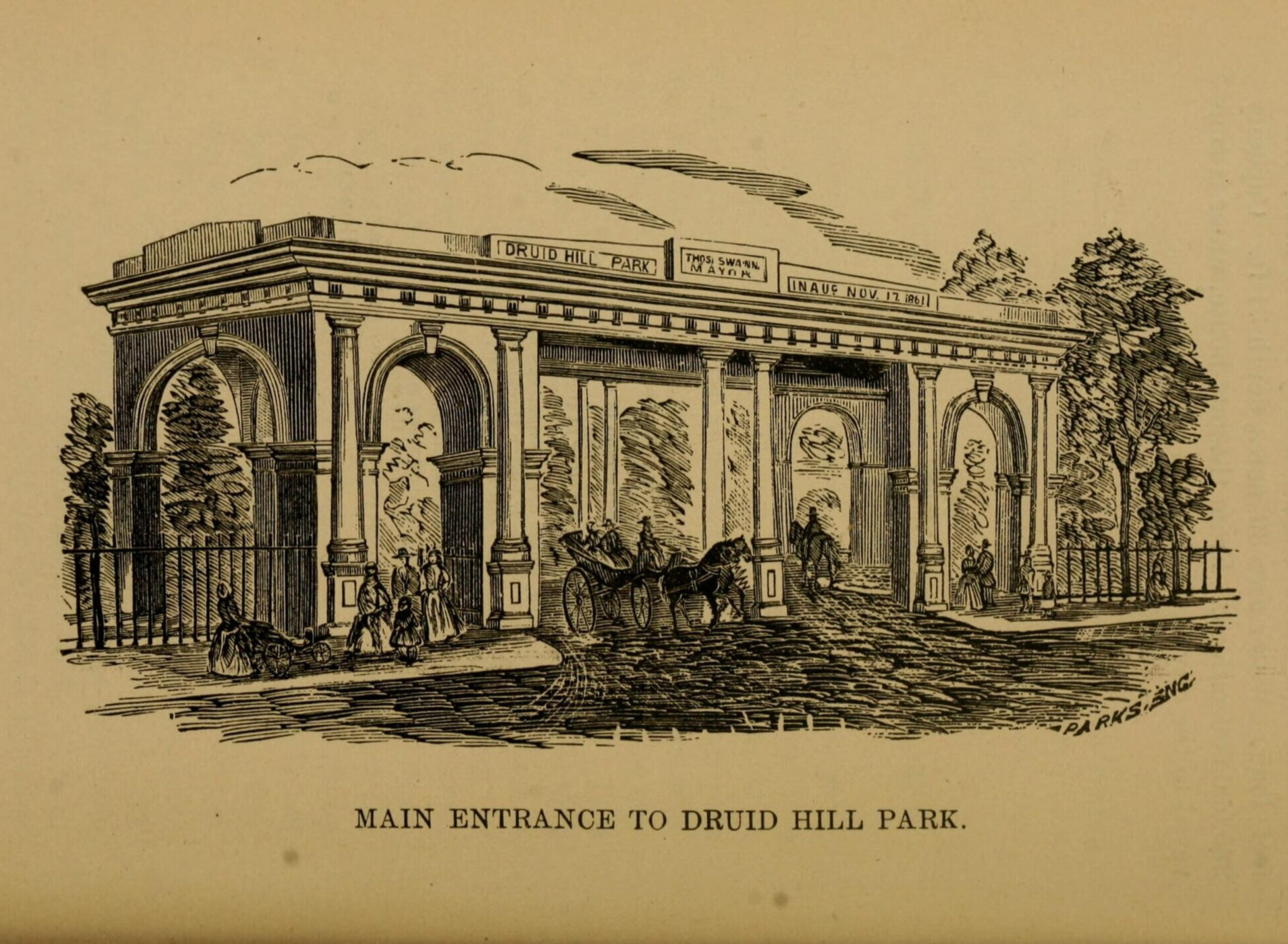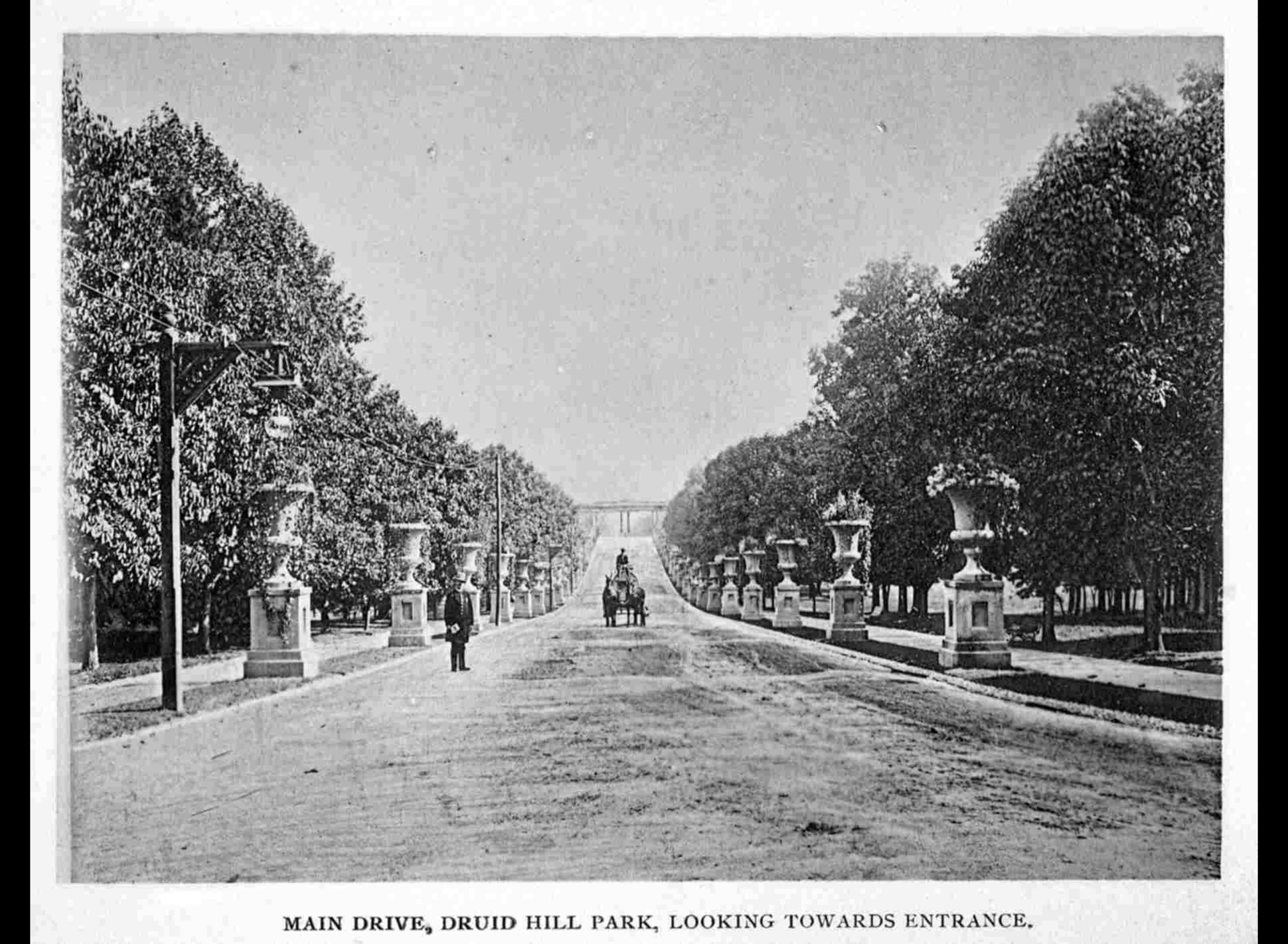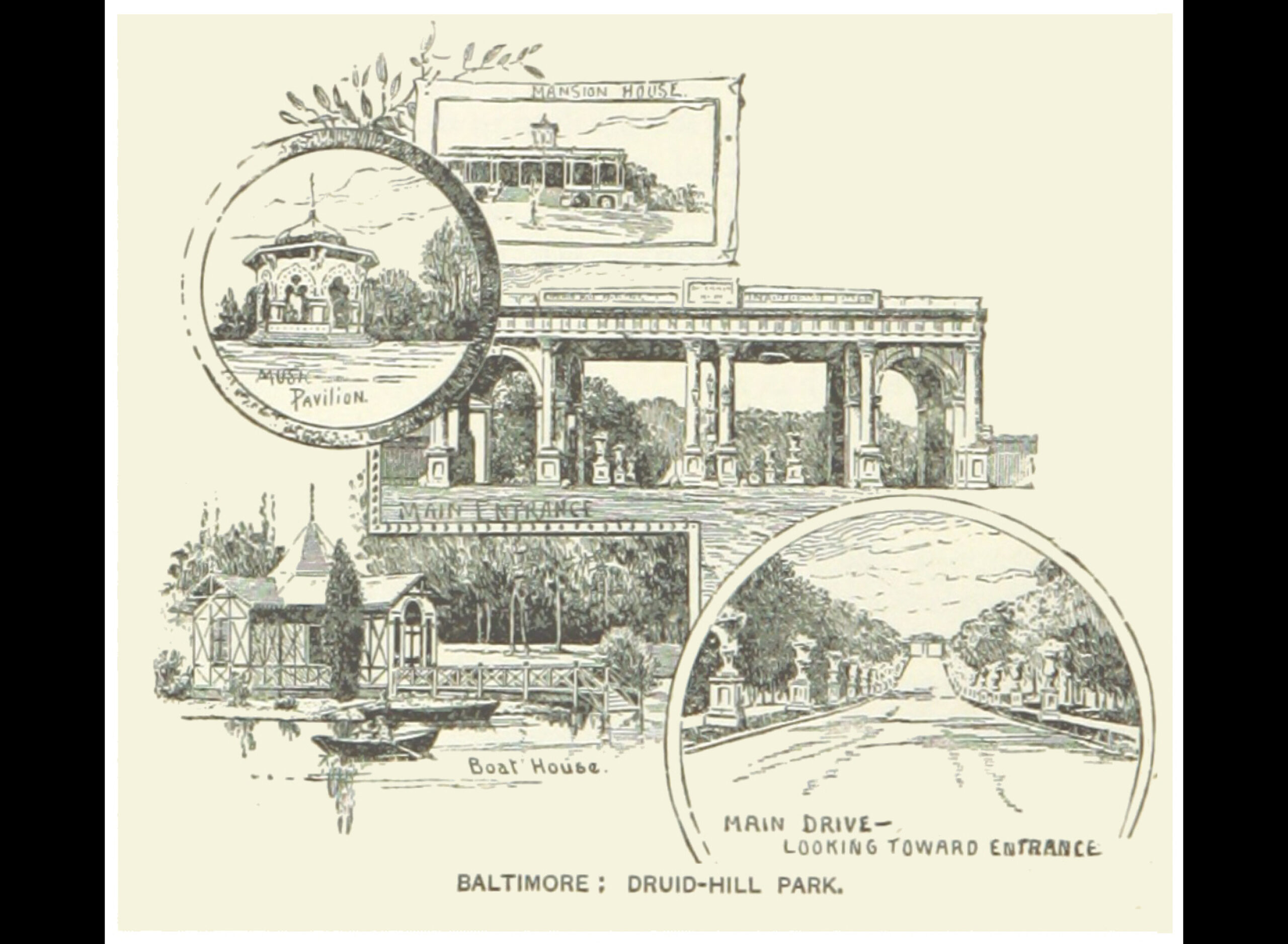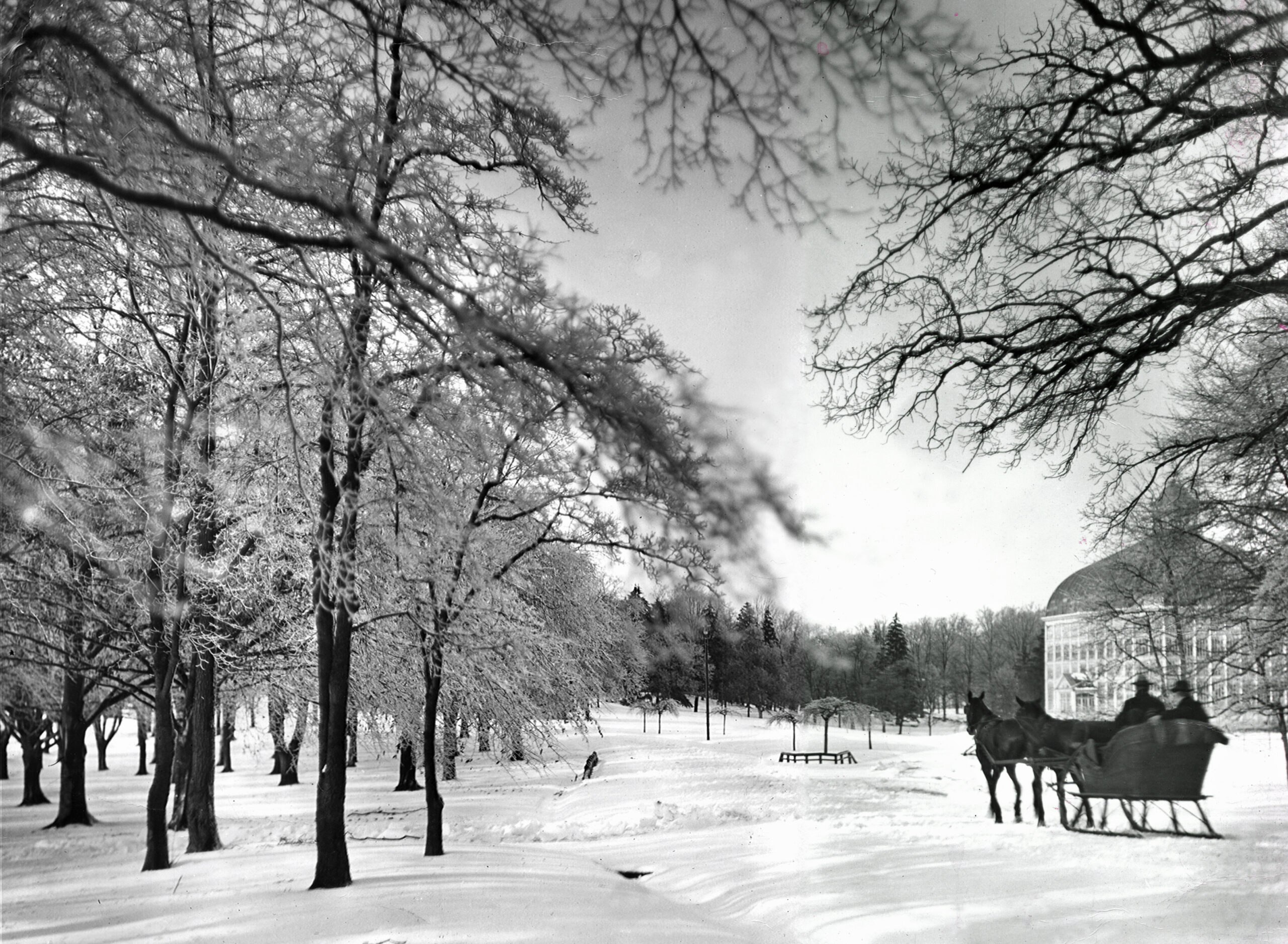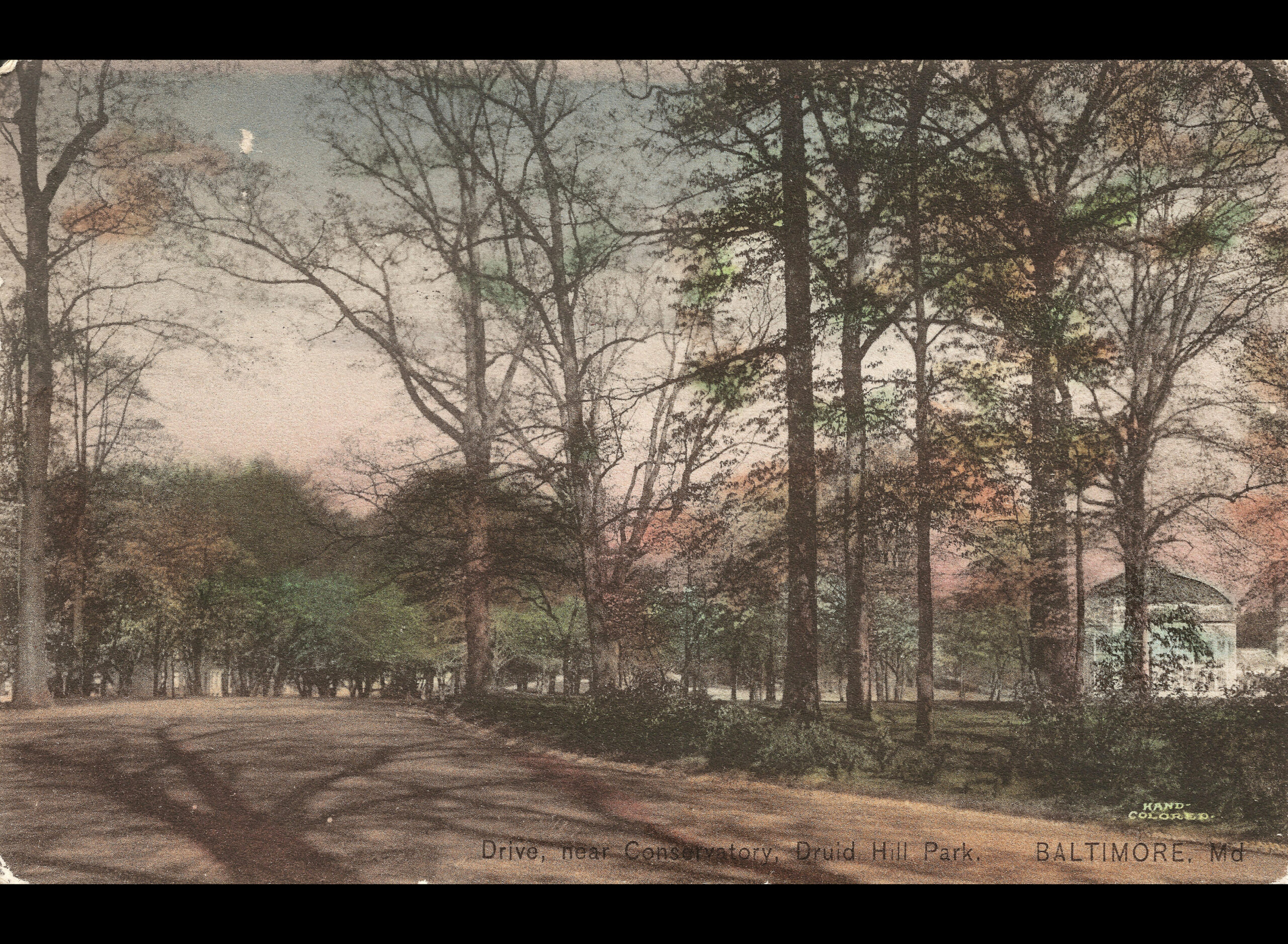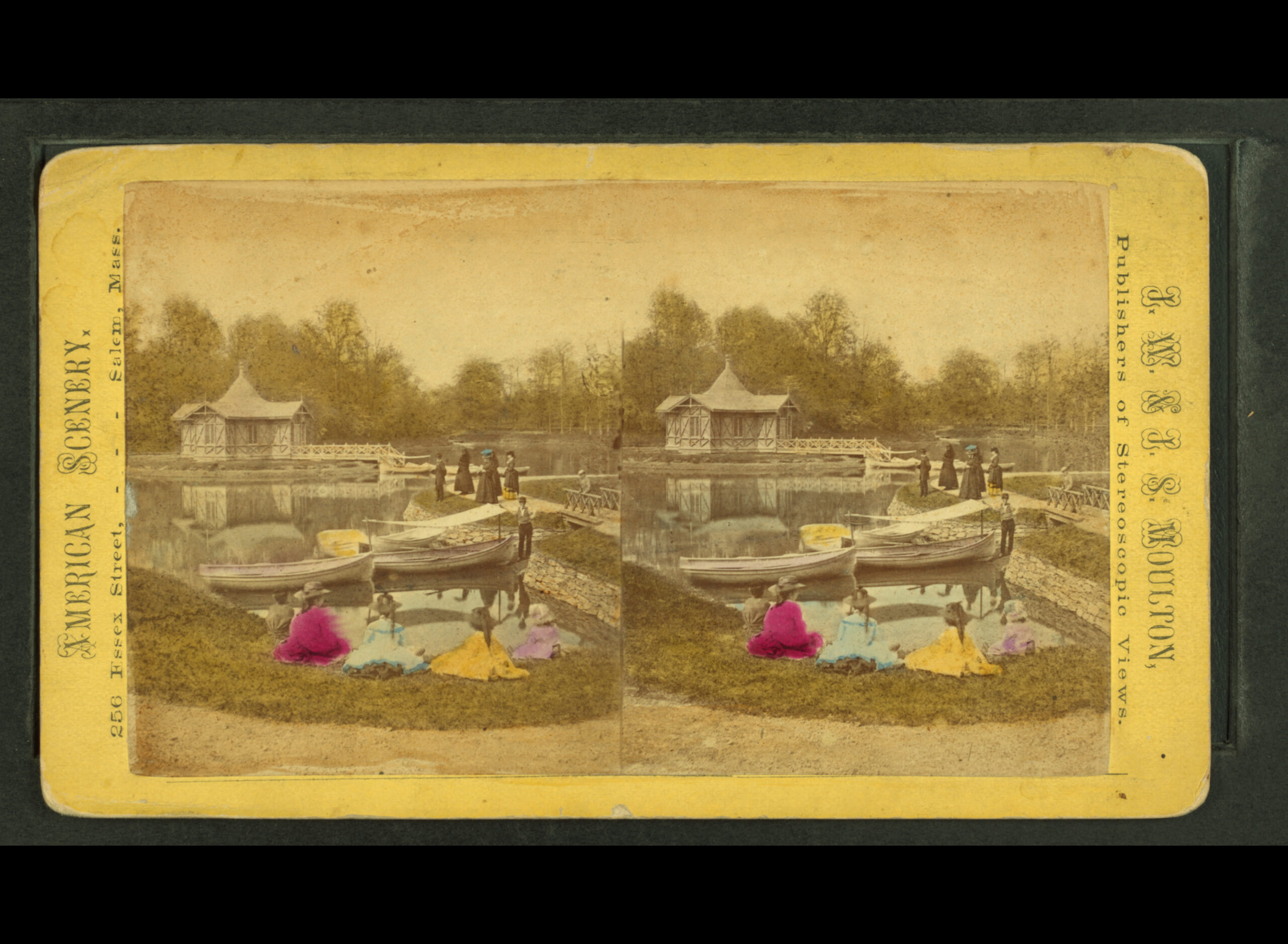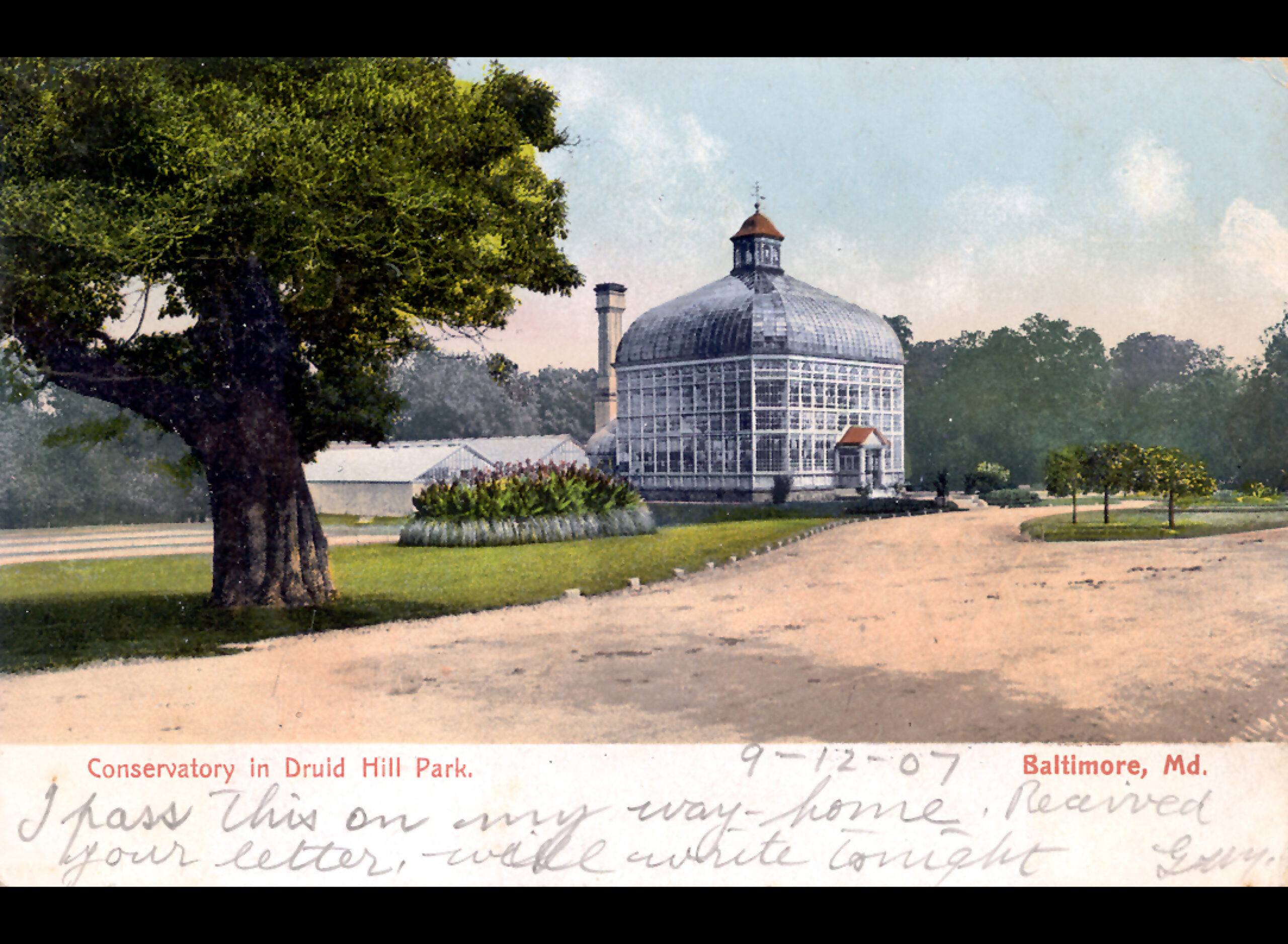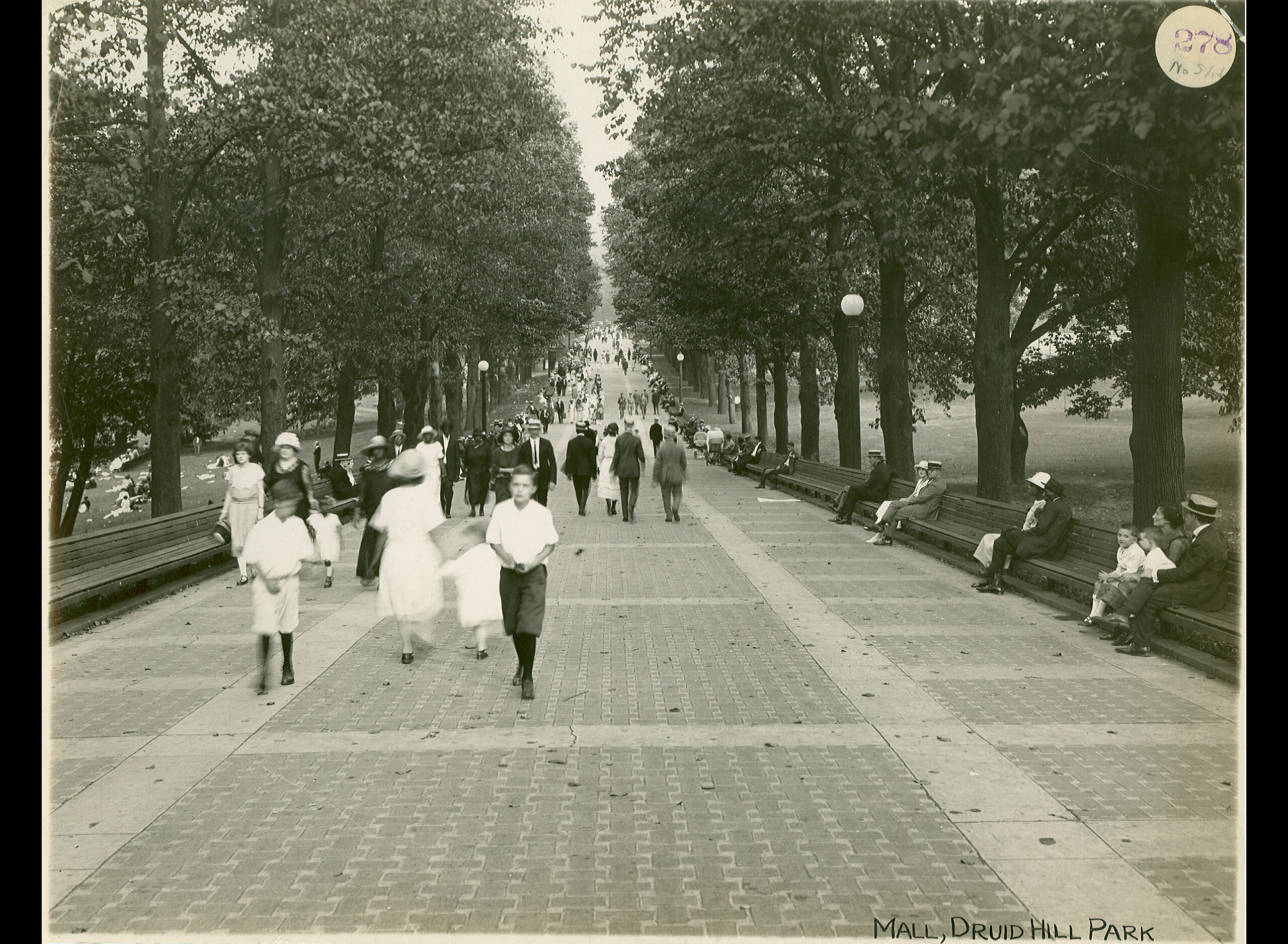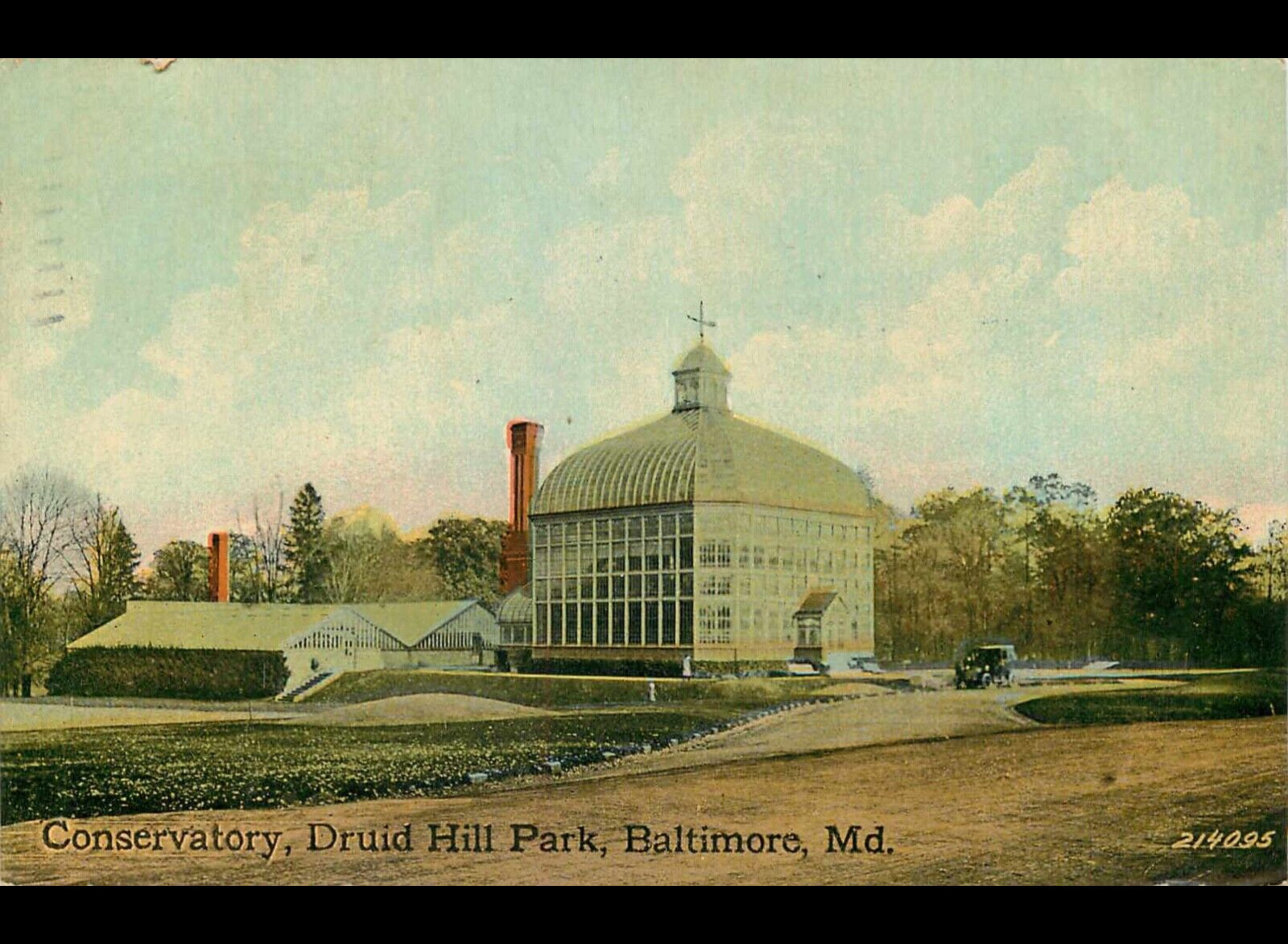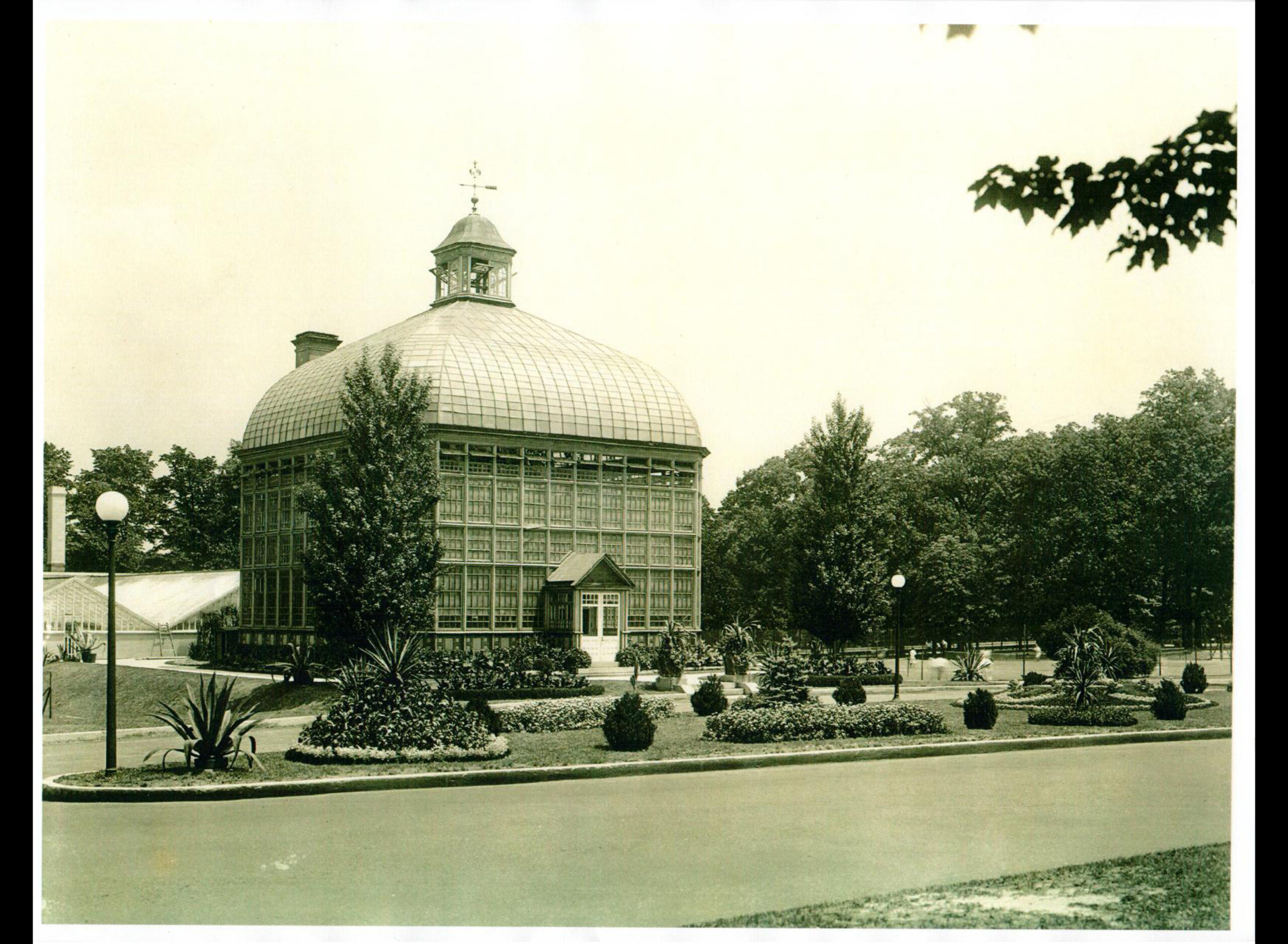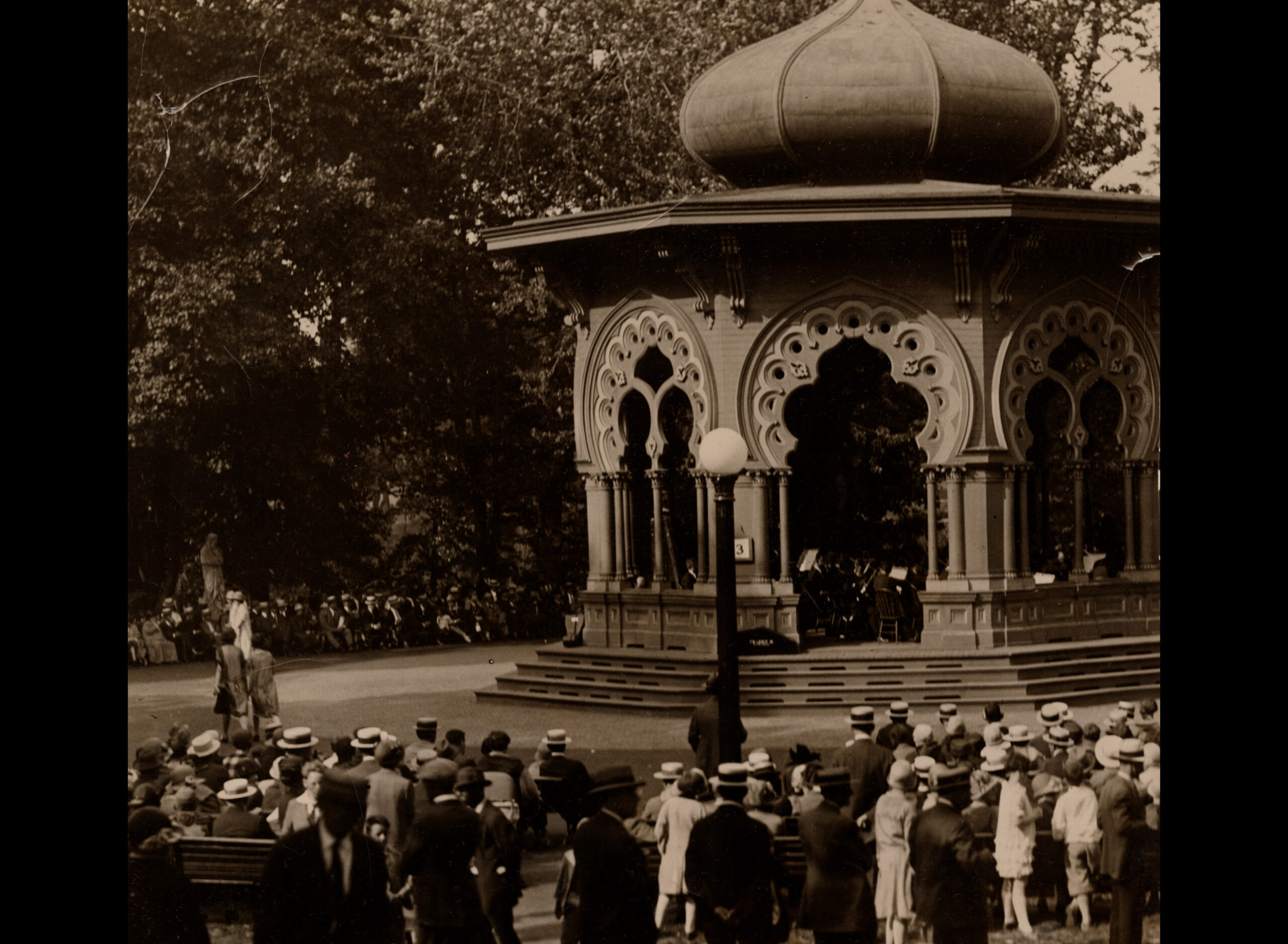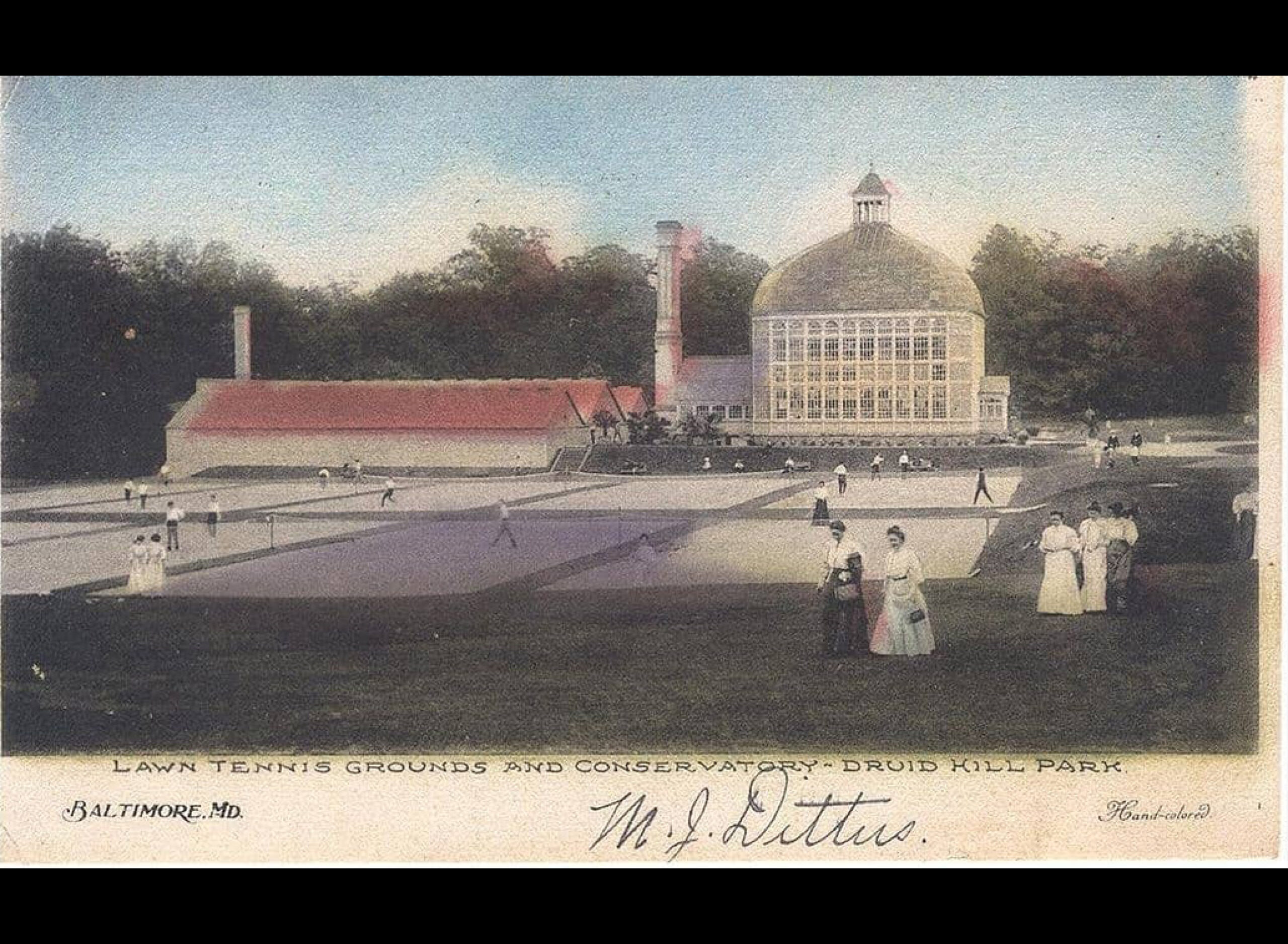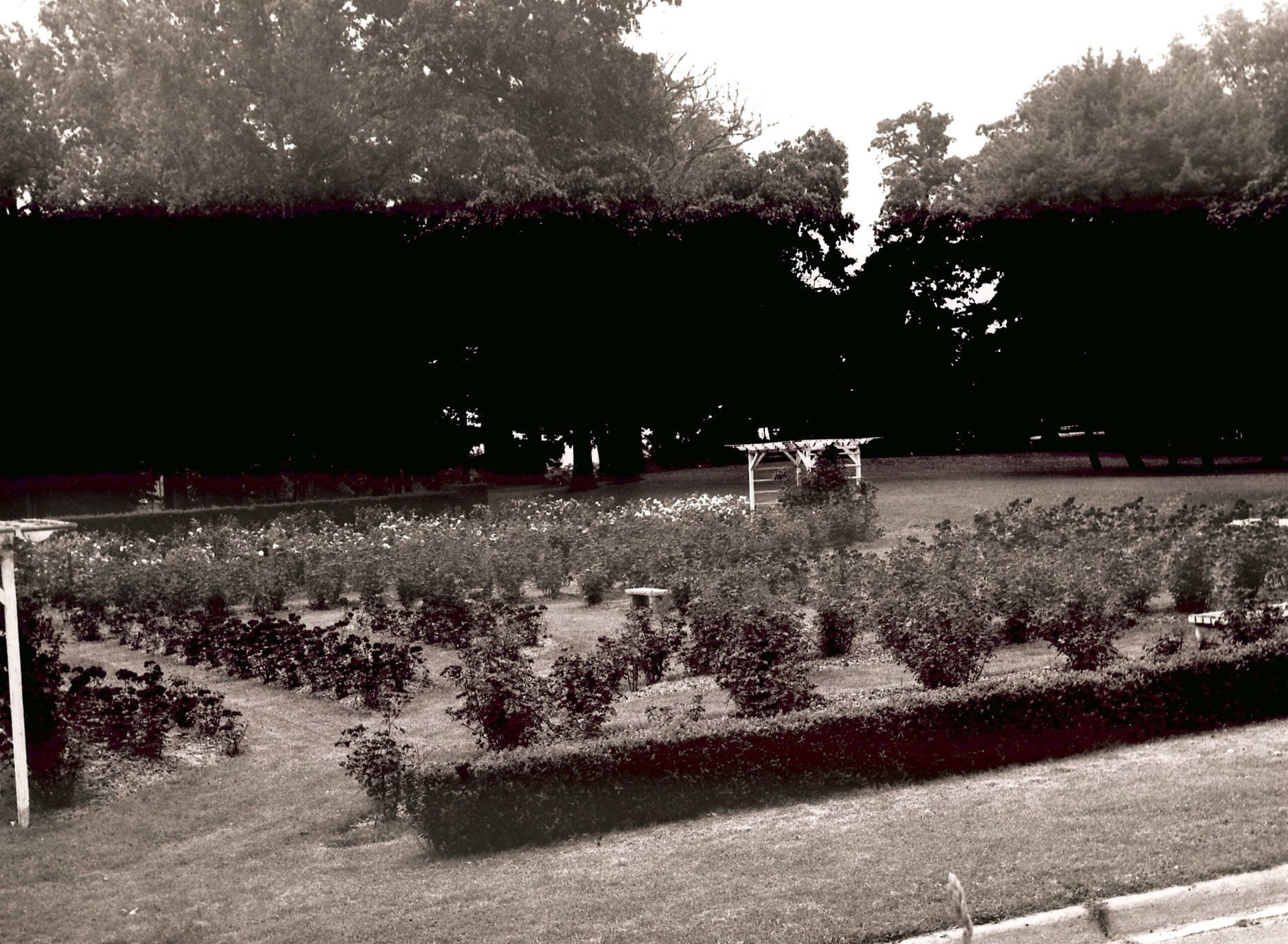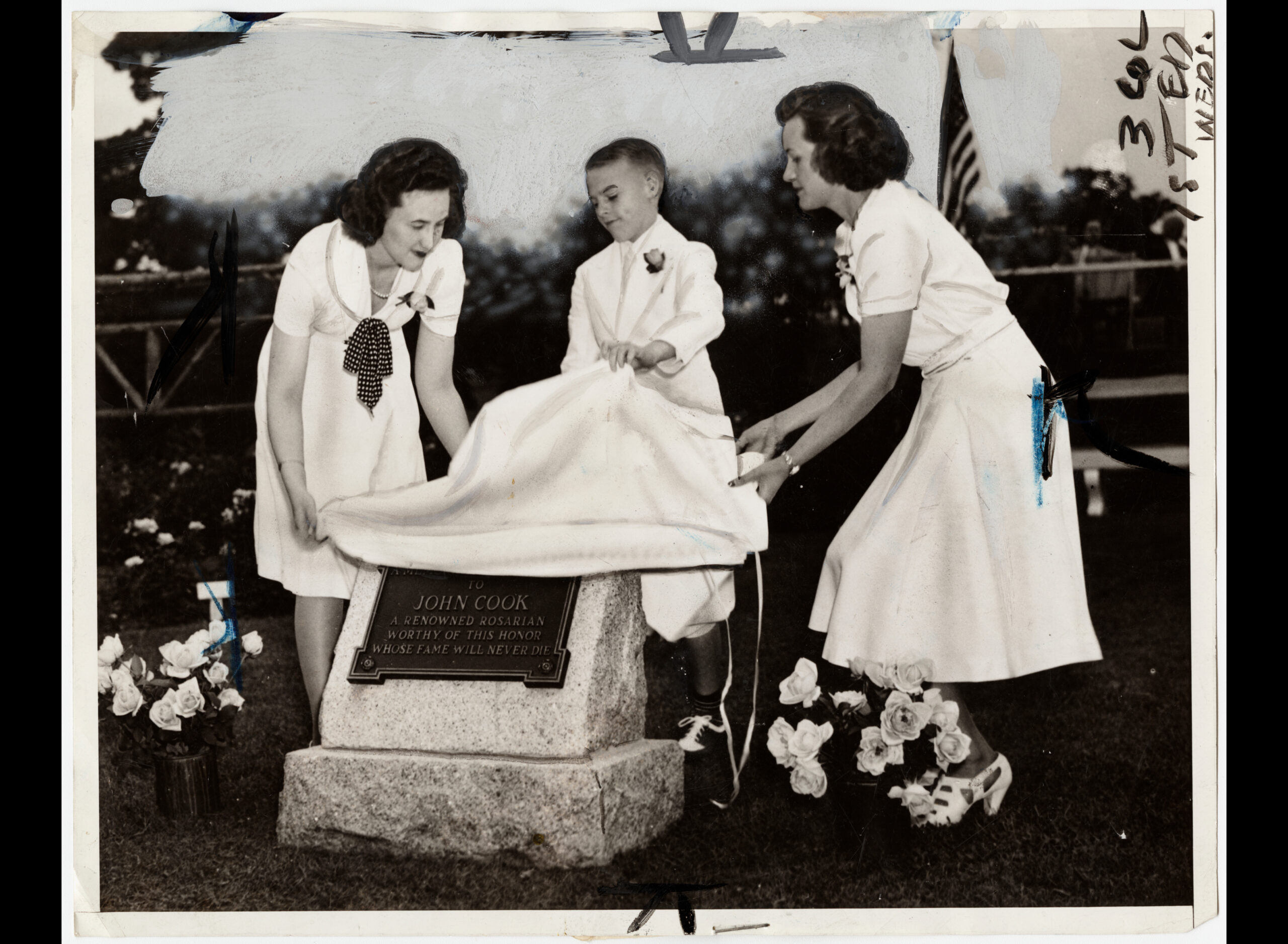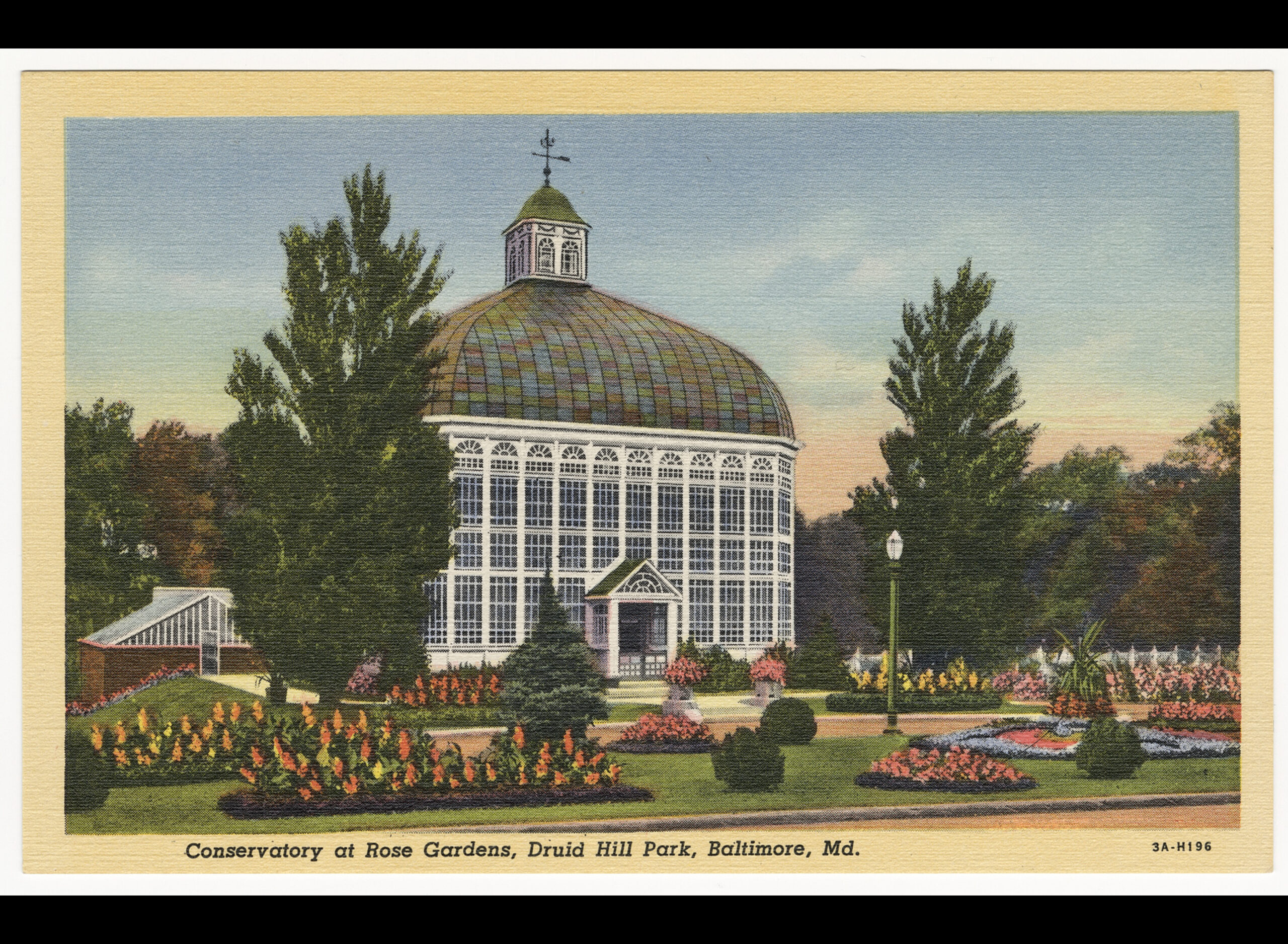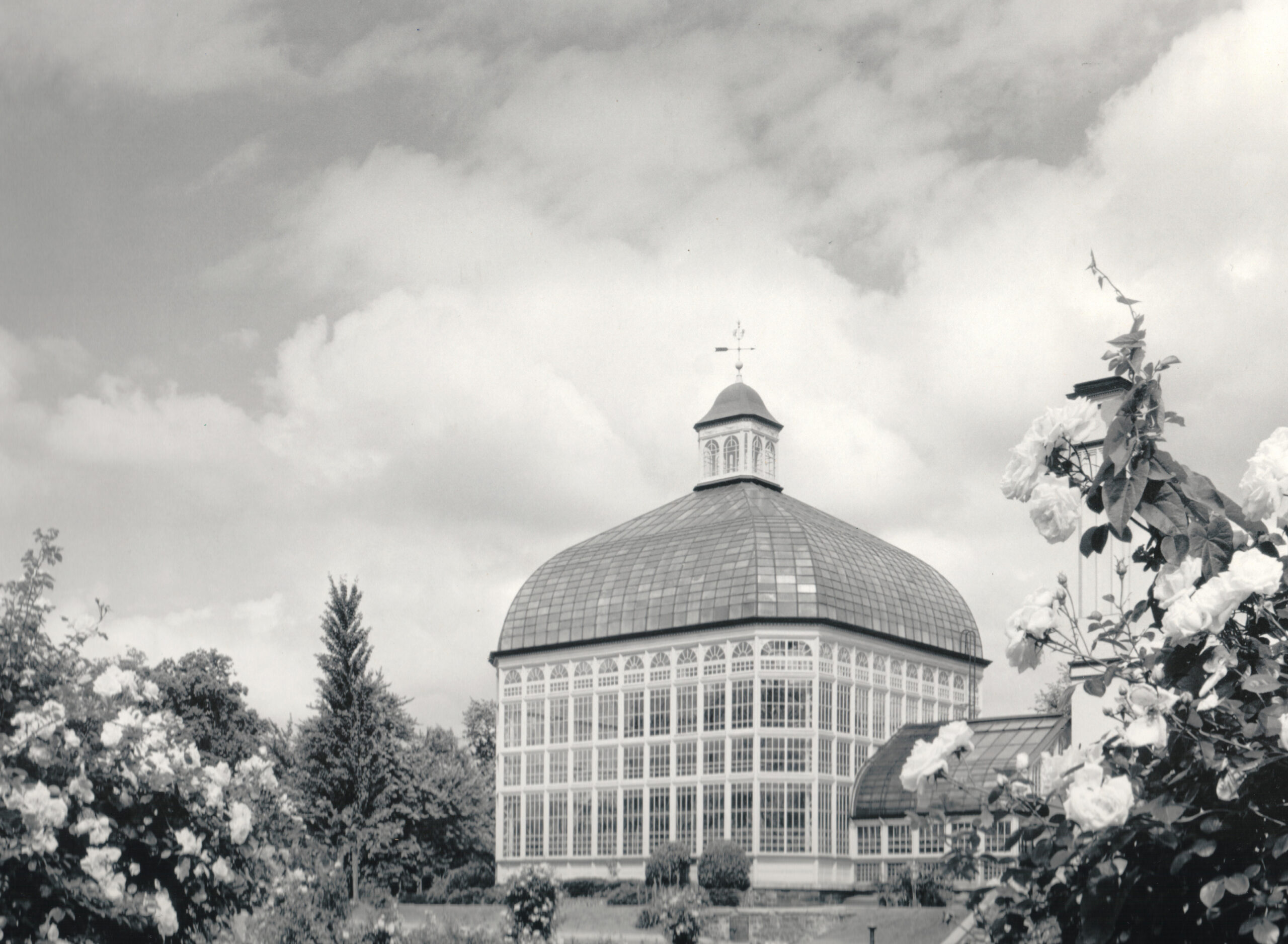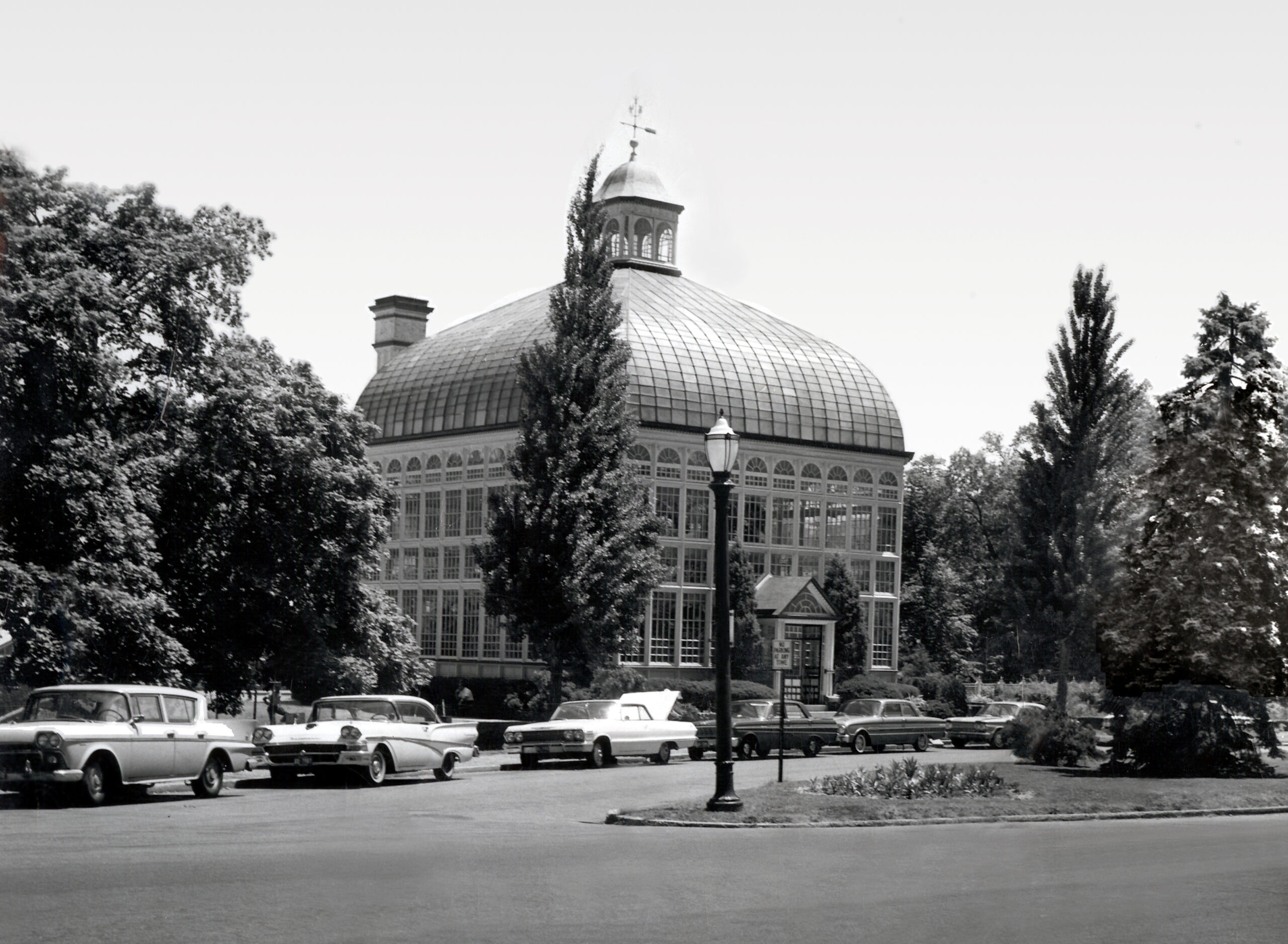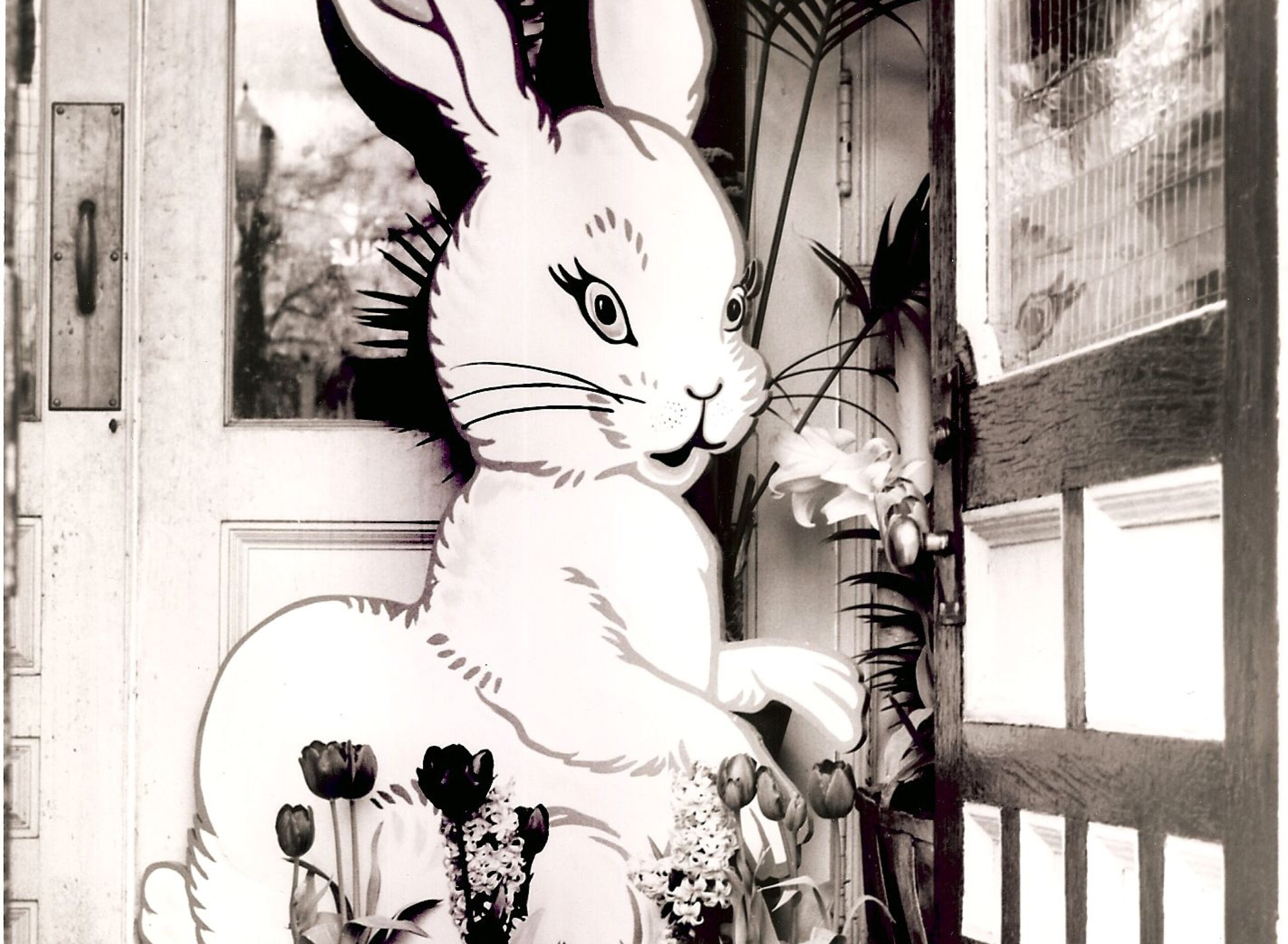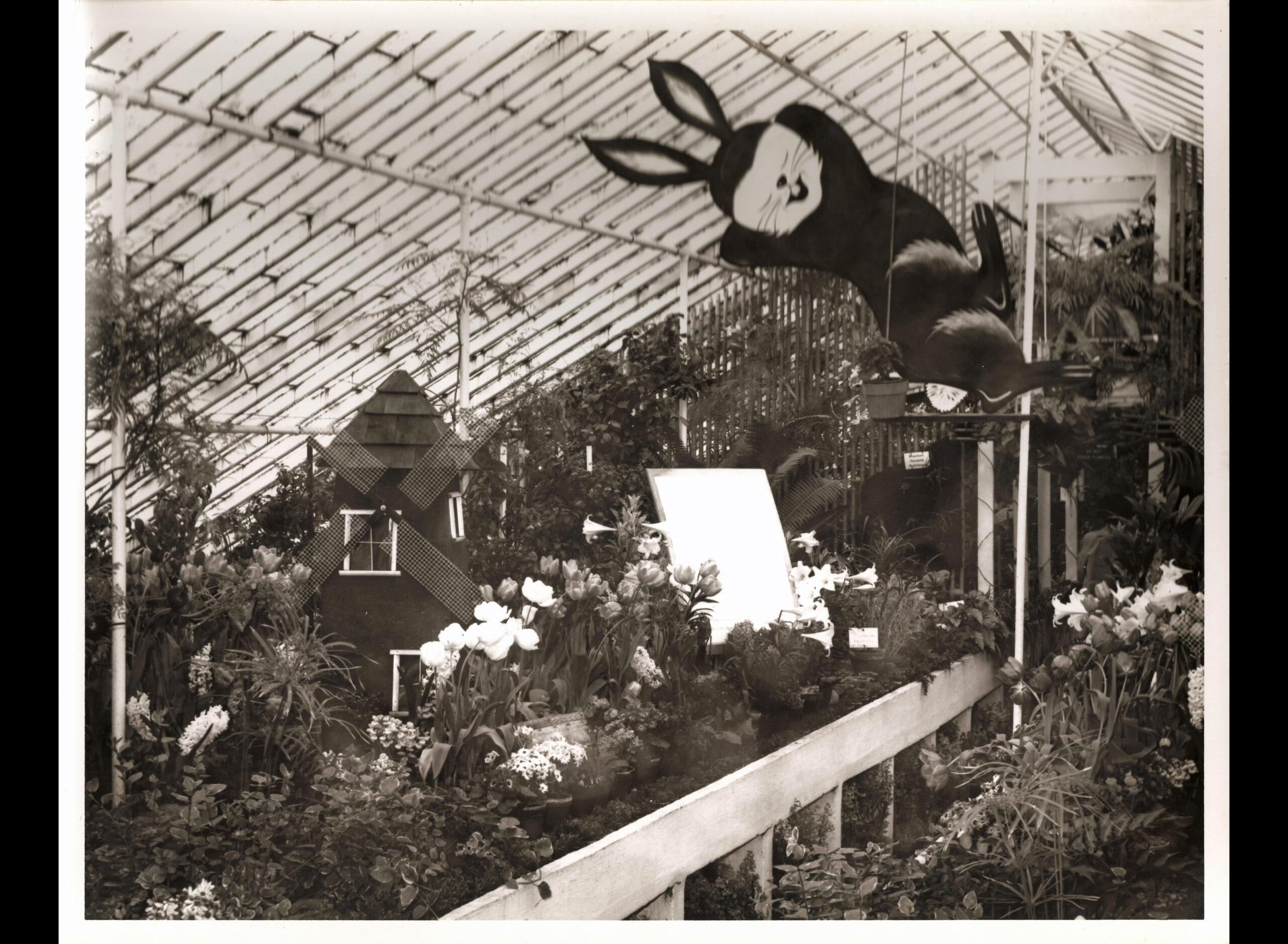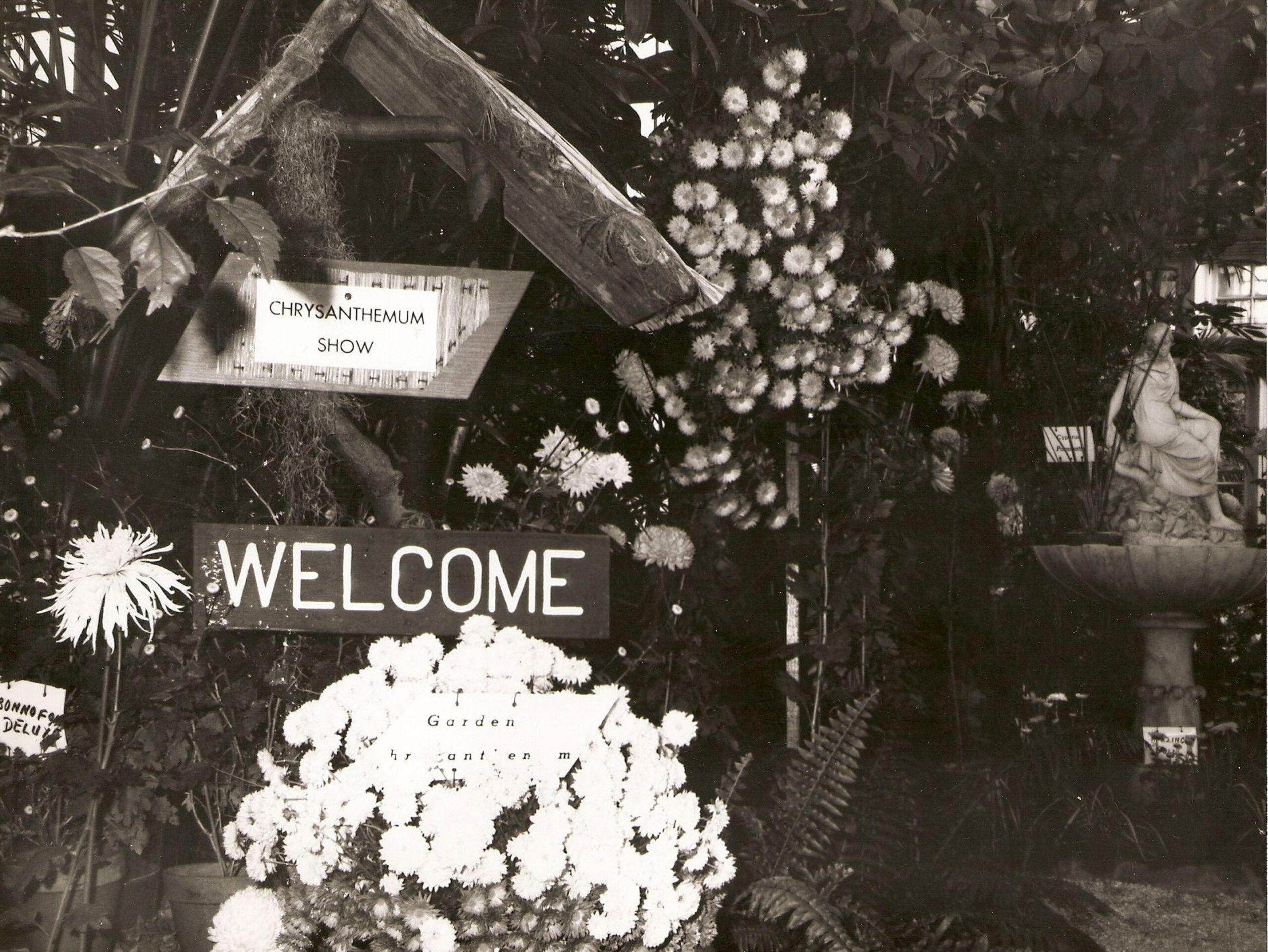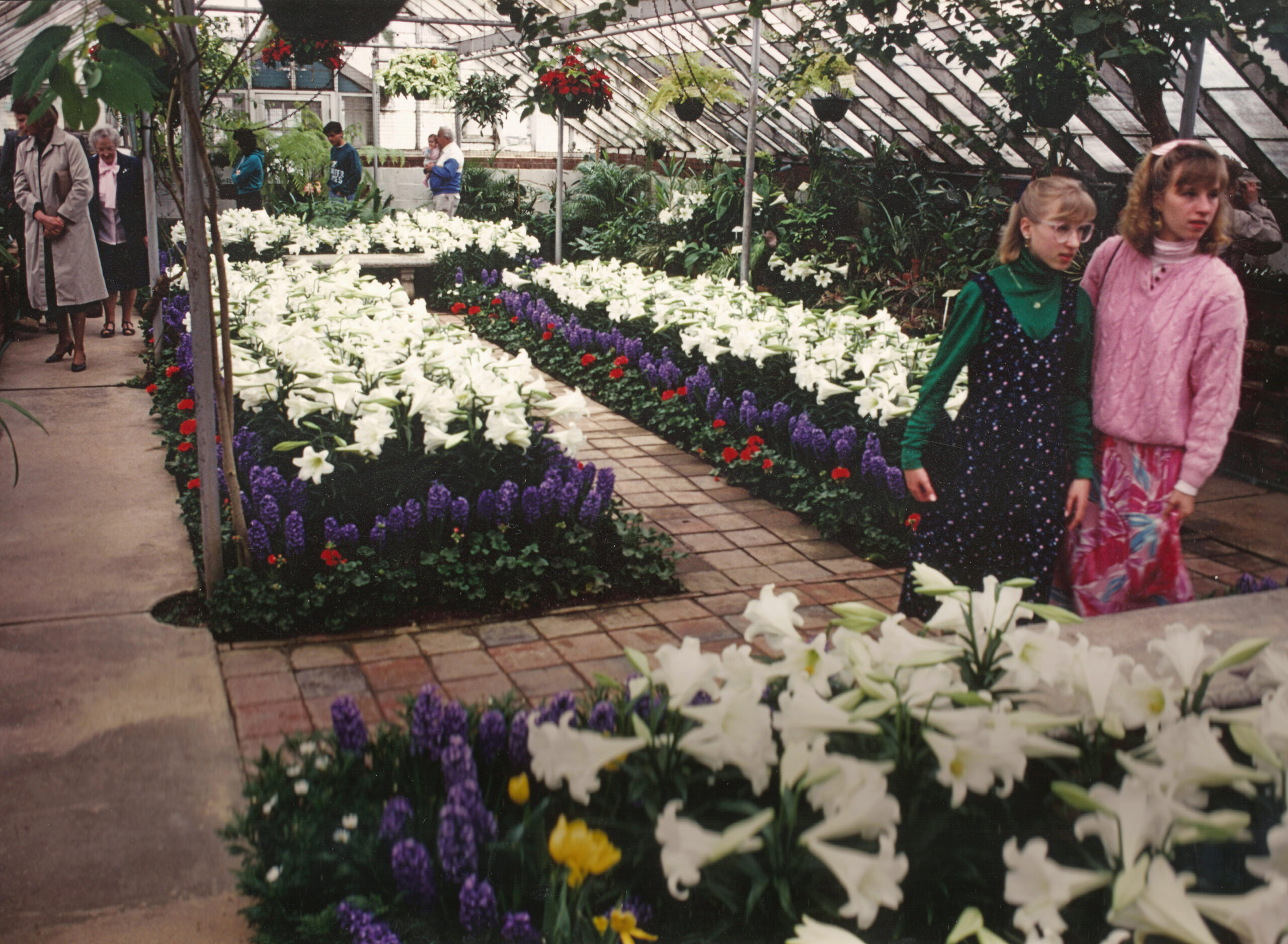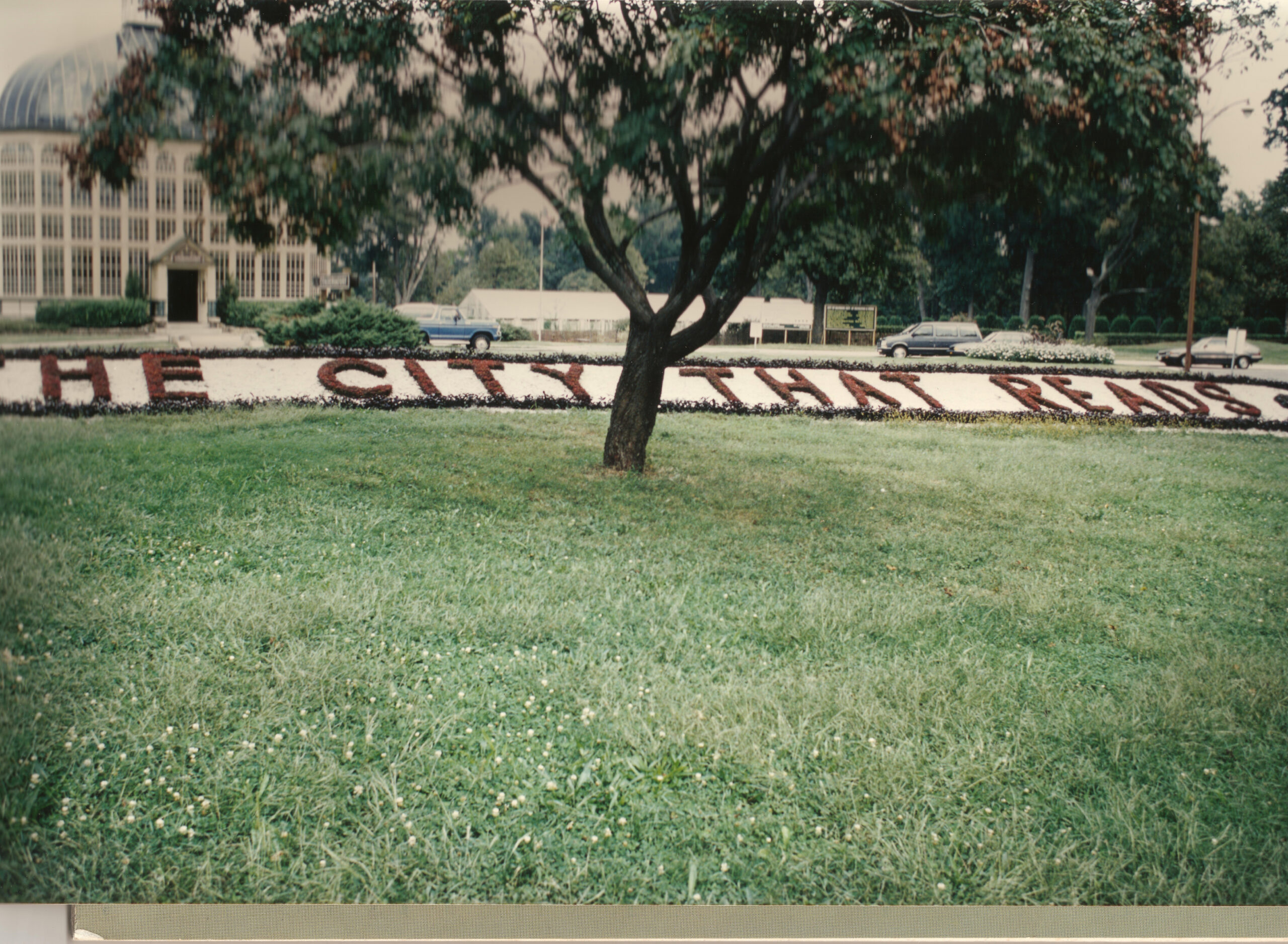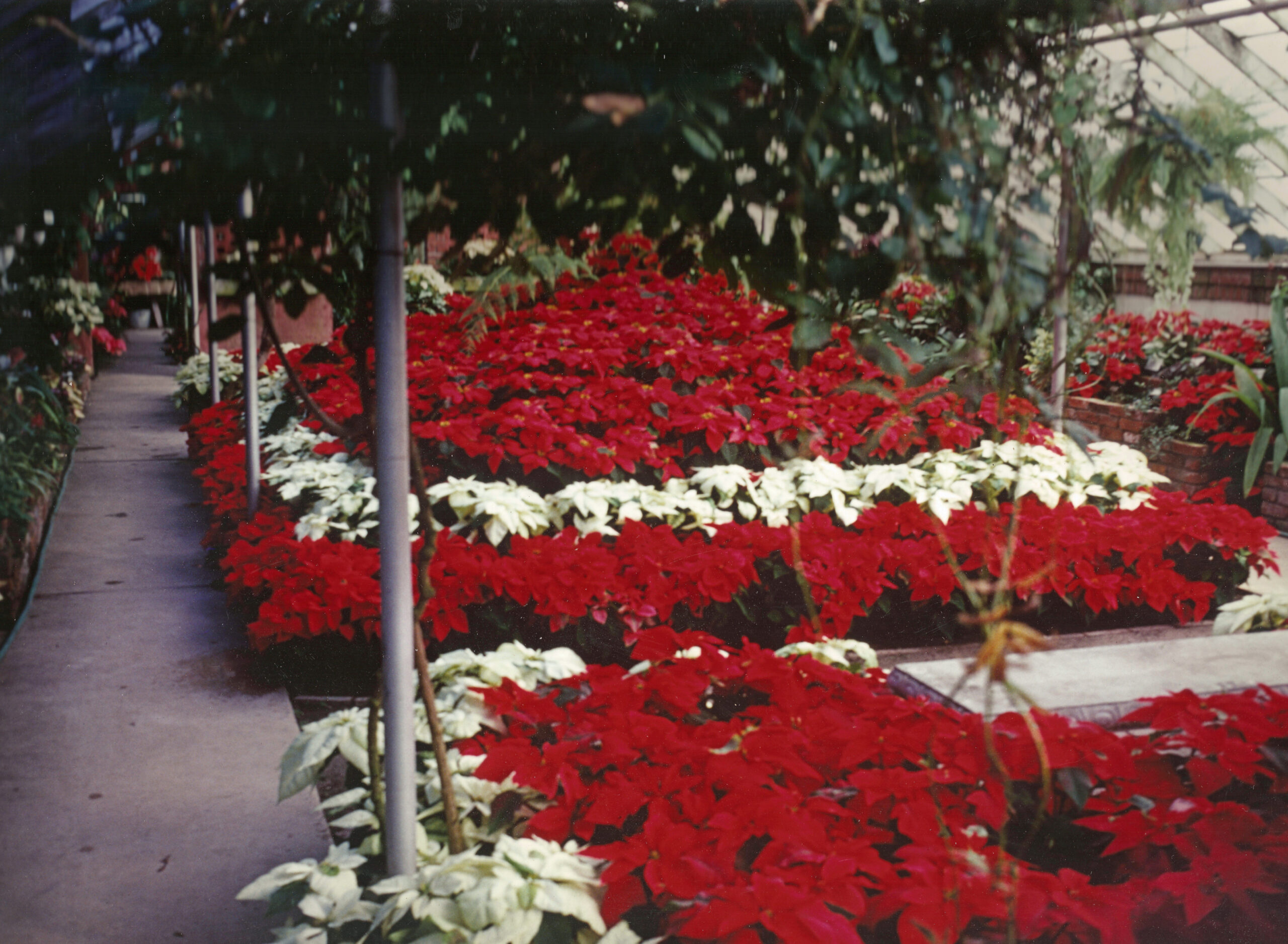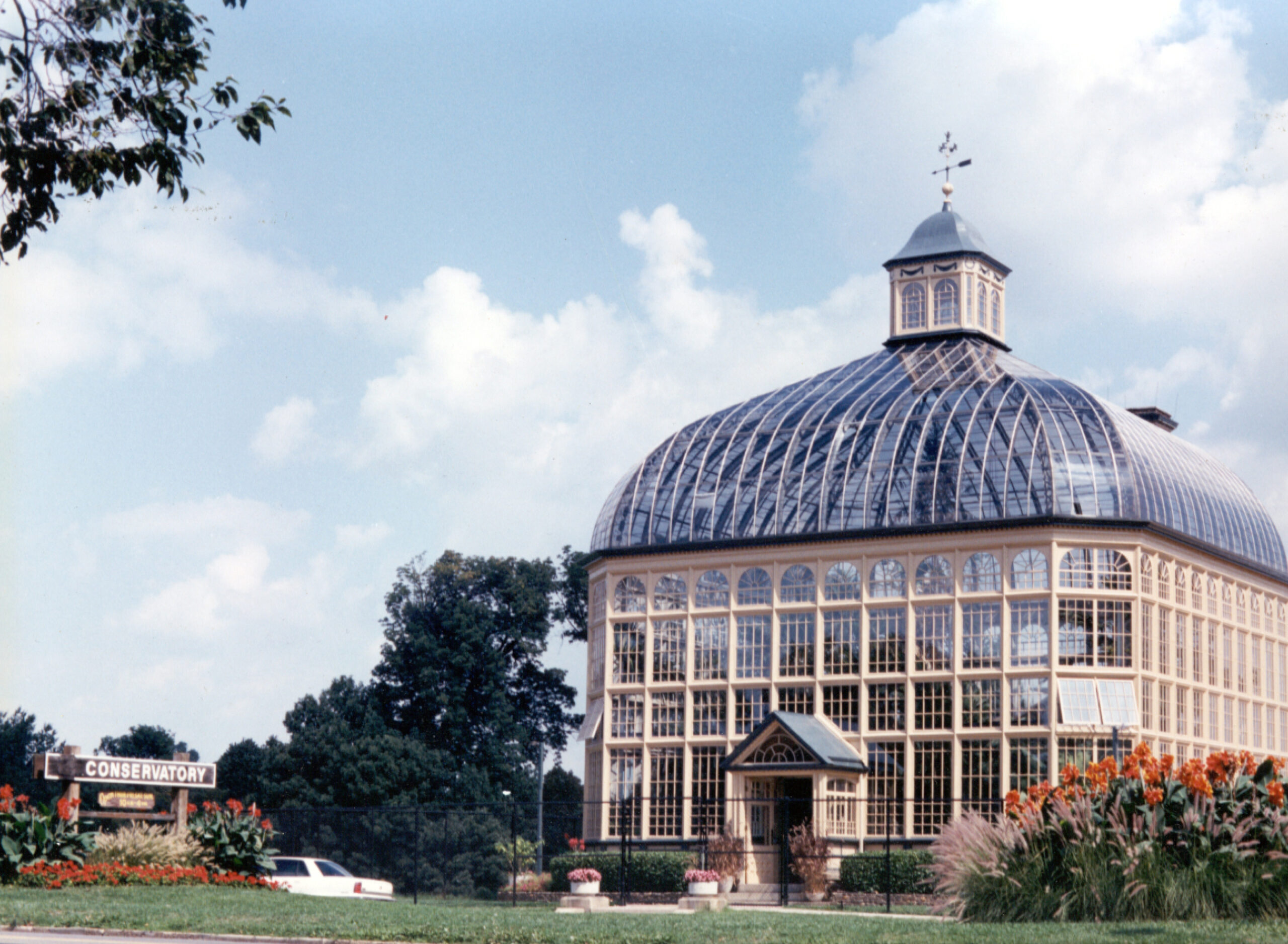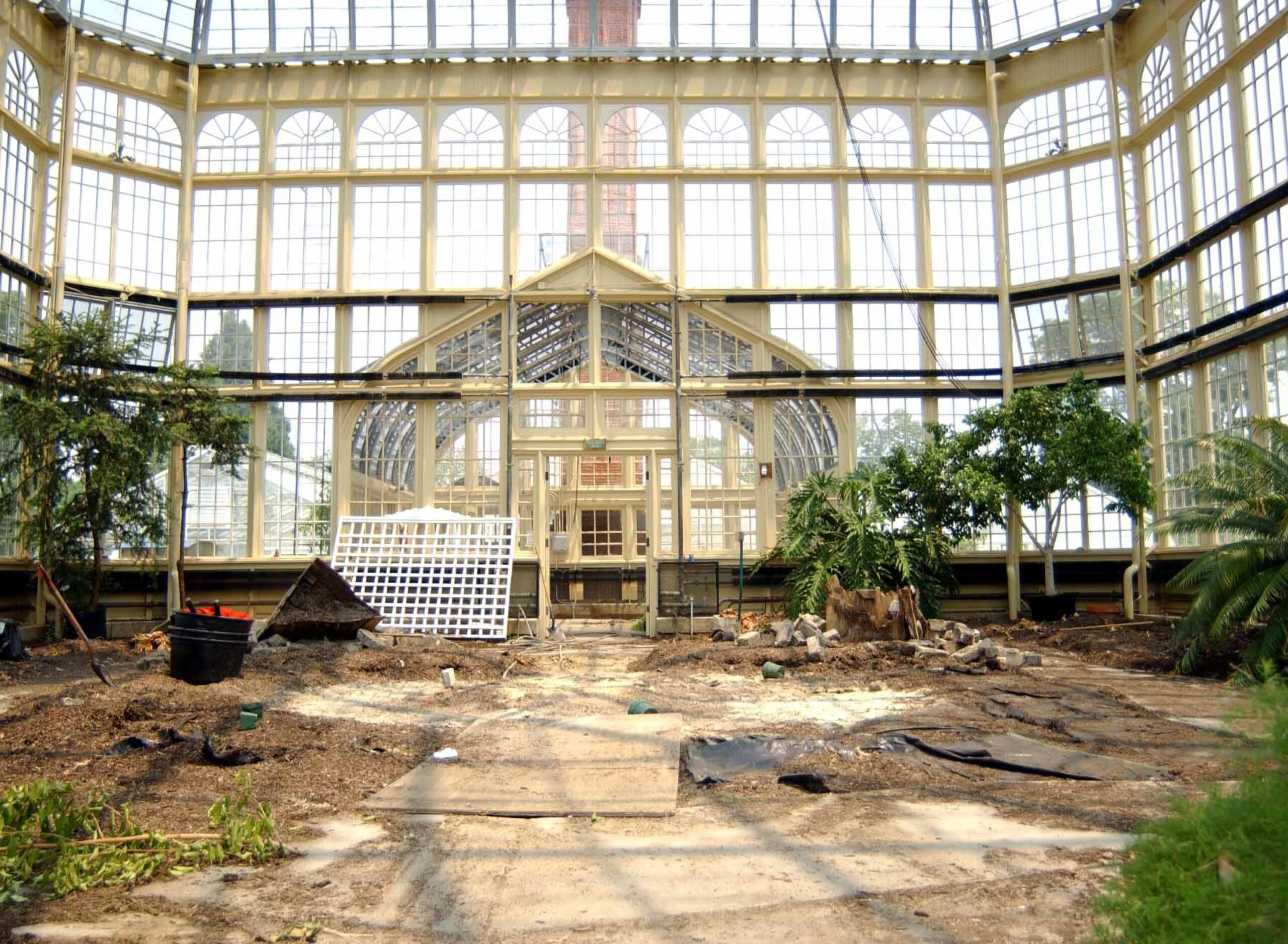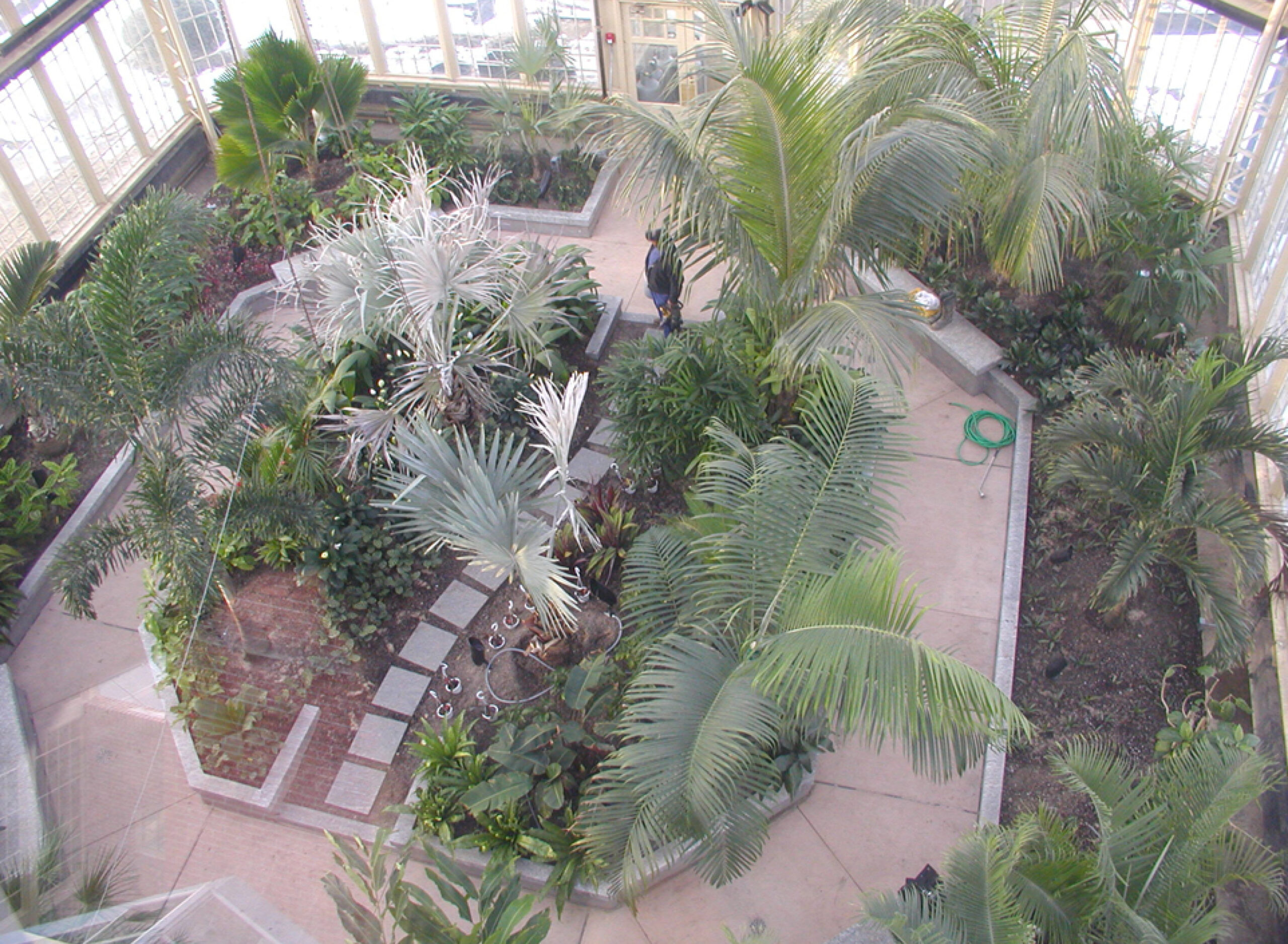History
For over a century, the architectural jewel that is Baltimore’s H.P. Rawlings Conservatory and Botanic Gardens has stood as an extraordinary preserve for rare and exotic plants—and a unique educational resource for the public.
Today, it is the oldest, public iron-and-glass-framed conservatory still in use in the United States and was listed in the National Register of Historic Places in 1973.
But what inspired the Conservatory’s creation? It all starts with the unexpected gift of a rare collection of flowering Japonica shrubs.
1860
Baltimore’s Druid Hill Park opens to the public, the third such major municipal park in the United States. Its rolling 746 acres in West Baltimore features a designed landscape of fountains, ponds, picnic shelters, and walking paths through meadows and old-growth forest. The Park also includes a working farm to generate income, complete with cattle and sheep.
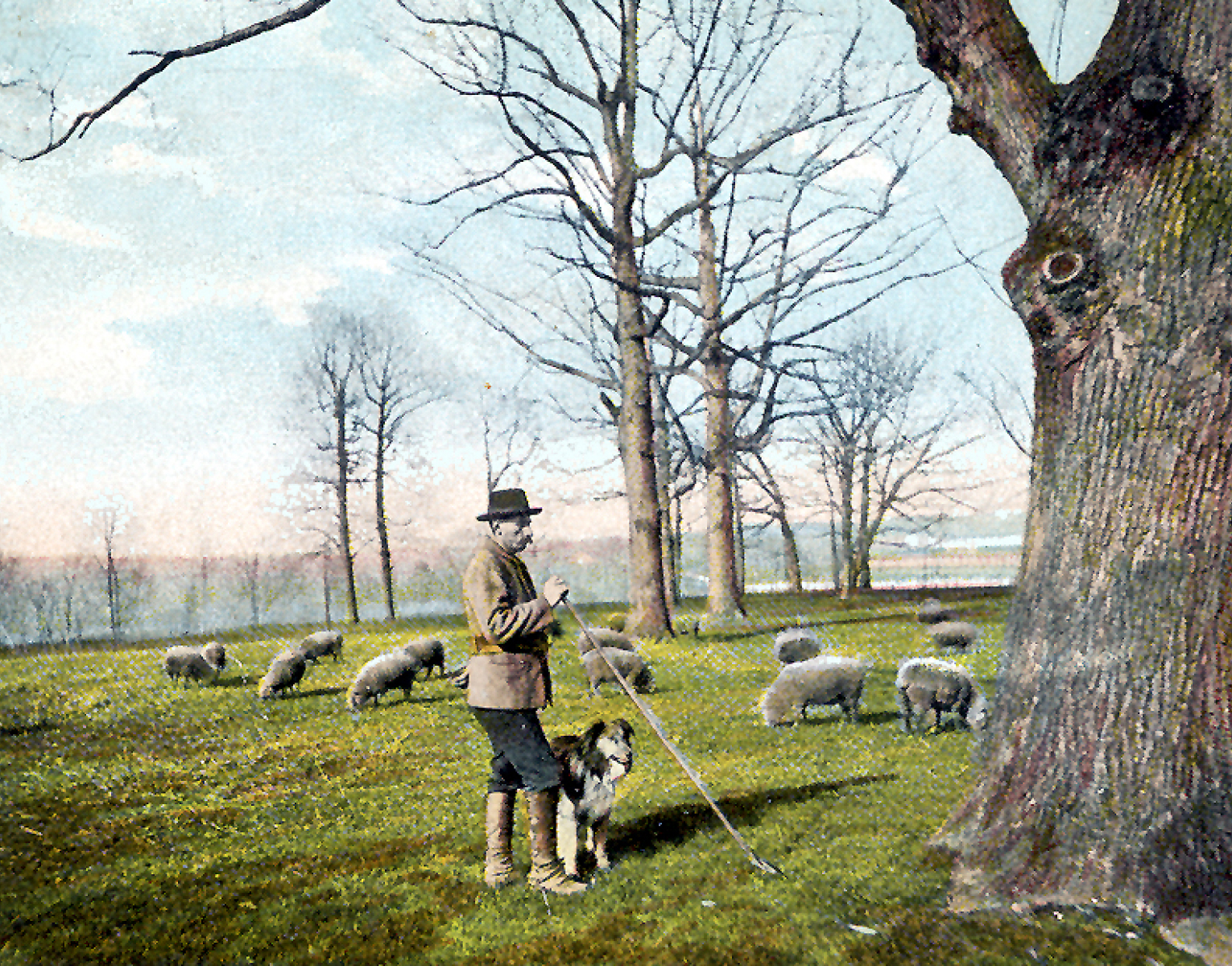
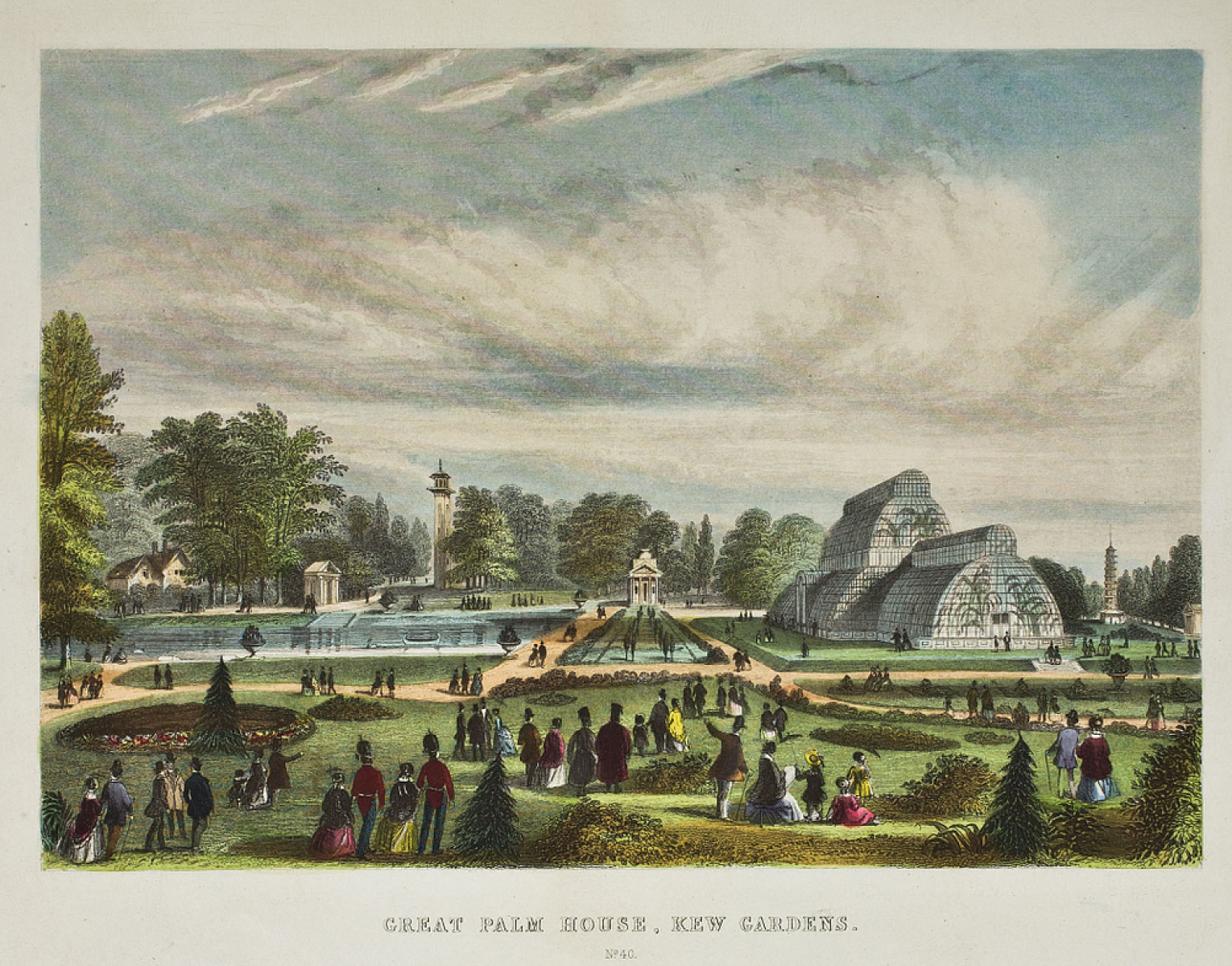
1874
Baltimore’s park commissioners proposed the establishment of a botanical conservatory in Druid Hill Park and directed George A. Frederick, the park architect, to design and make plans for the new building. Abbott Kenny, a member of the committee for the Conservatory, traveled to Europe to visit the famous Kew Gardens of London, a model for the new design. Due to the cost and unexpected expenses elsewhere, the Park Commission shelved the project for a decade.
1882
The late Baltimore horticulturalist Edward Kurtz bequeaths “a large and valuable collection of Japonicas, intended by the donor… expressly for Druid Hill Park.” Because the Park Commission had no structures in place to house the gift in Druid Hill Park, a temporary greenhouse is built for it in Baltimore’s Patterson Park.
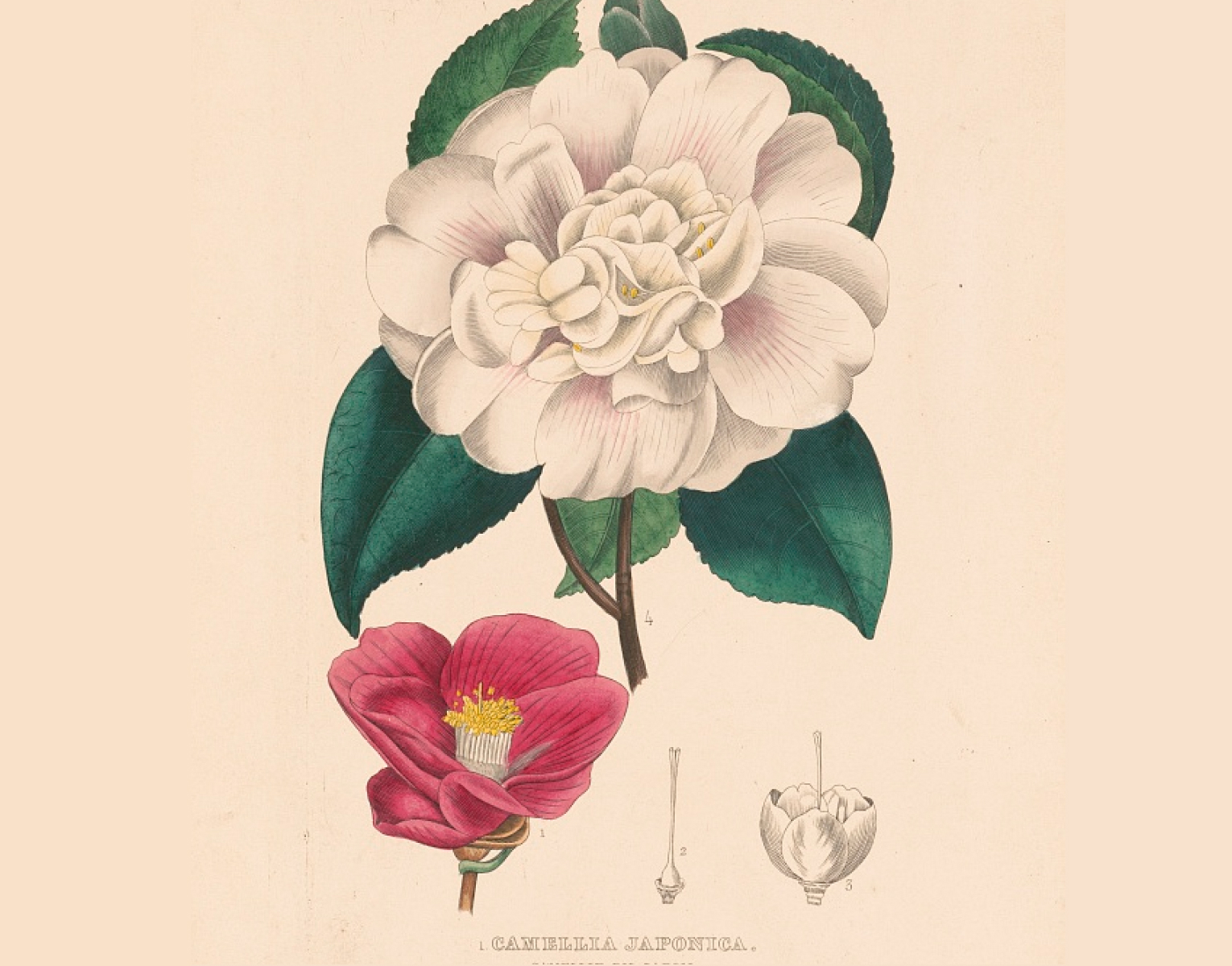
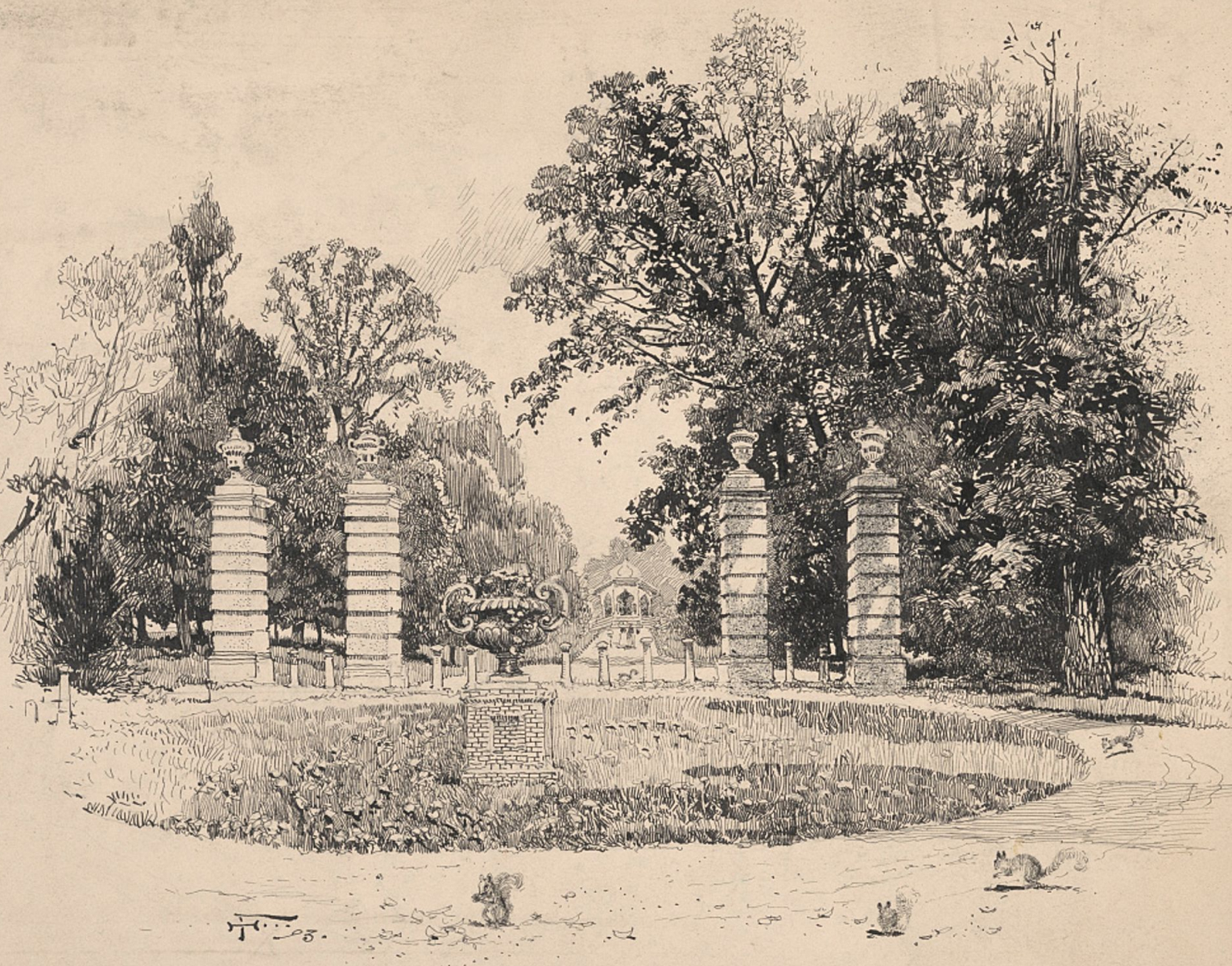
1883-1886
In response to Kurtz’s gift, discussion is revived about the need for a botanical conservatory in Druid Hill Park. Park commissioners work to put funding in place for the project.
1887
Ground is broken for the foundation of the Conservatory on August 31, 1887. The structure, modeled after the Kew Gardens in London, England, consists of a large Palm House and a smaller, adjoining Orchid Room. (Wings on either side from the original plan were never built.) Throughout that year, the ironwork skeleton of the Palm House is completed, along with the surrounding wooden frame. Fifty-foot-high glass windows support the Palm House’s vaulted roof and cupola to accommodate tall, exotic plants—and Edward Kurtz’s Japonicas!
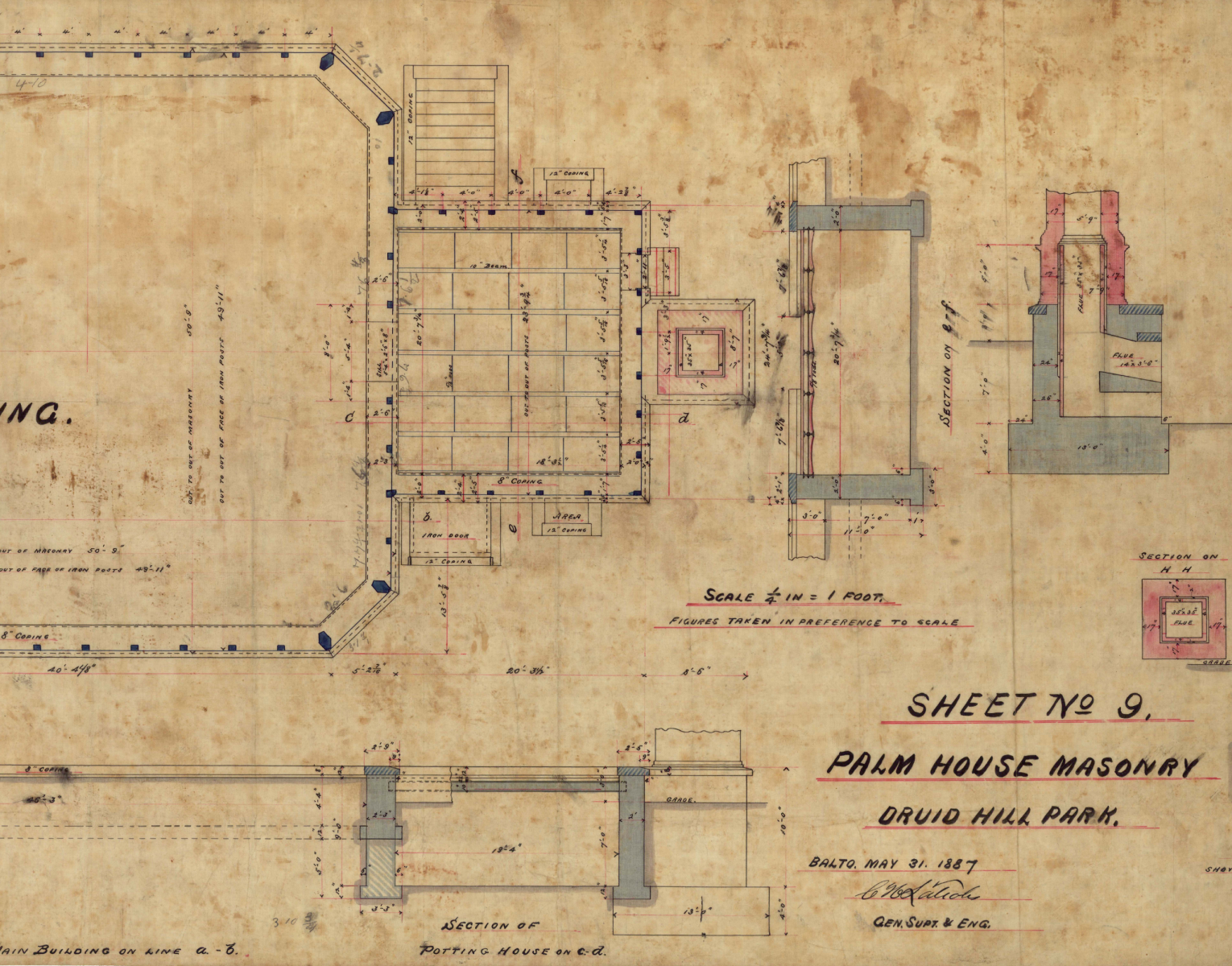
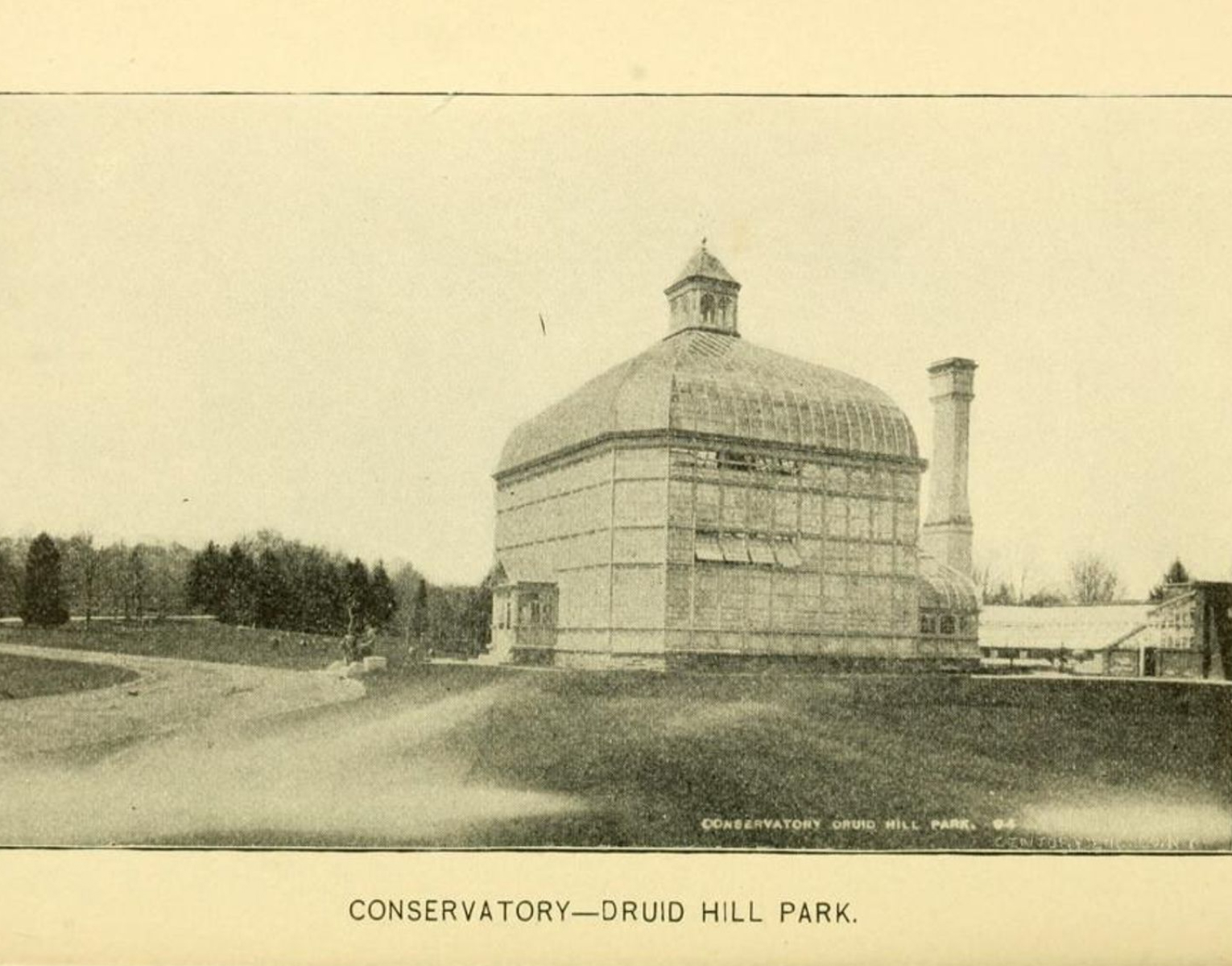
1888
The Conservatory opens to the public on August 26, 1888, to an audience of about three hundred visitors. The Park Commission’s bill for the new building is $23,375 – about $742,654 in today’s dollars.
1889
Landscaping around the Conservatory continues, with stone steps at the entry and driveway added. Propagating and potting houses were added behind the building.
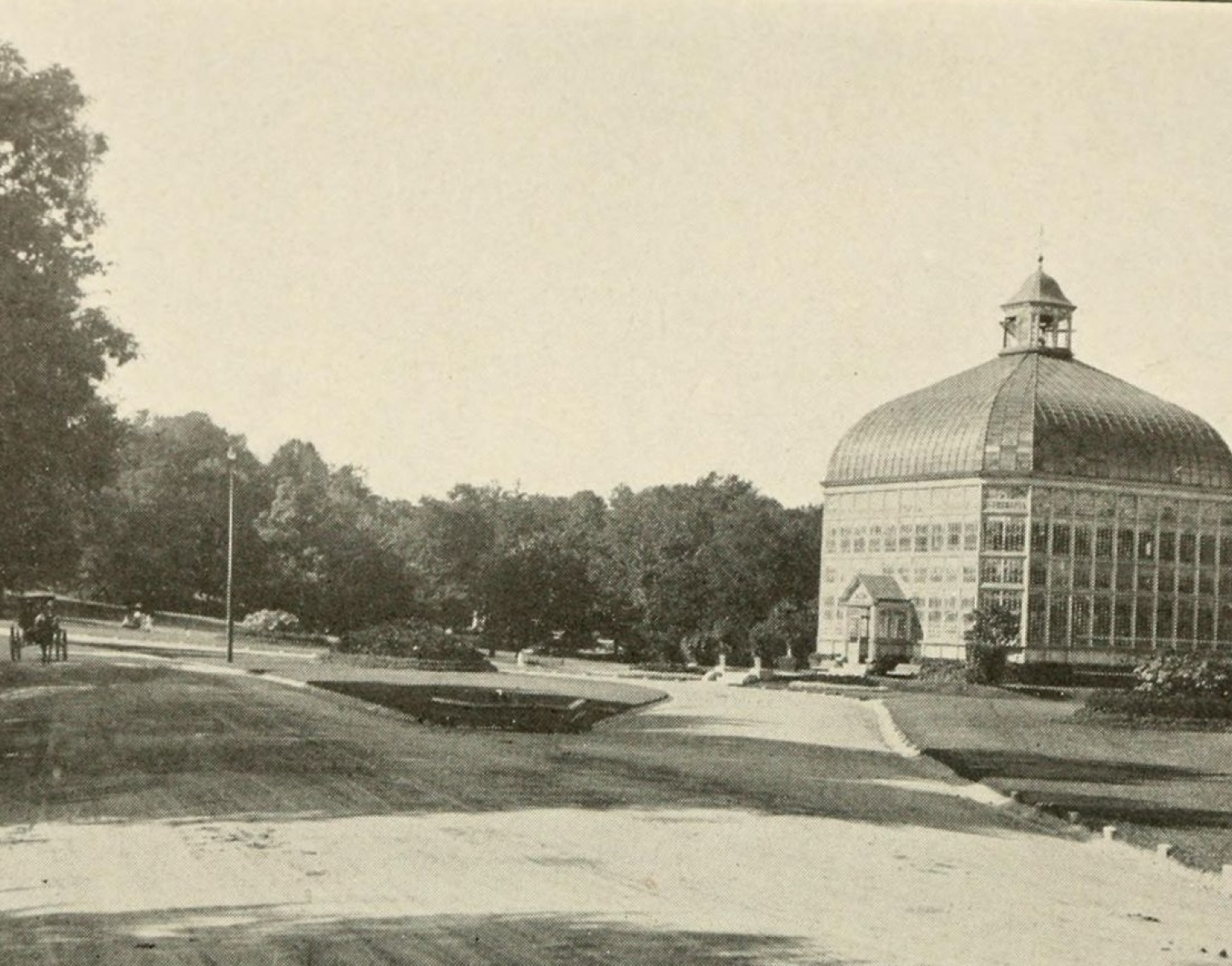
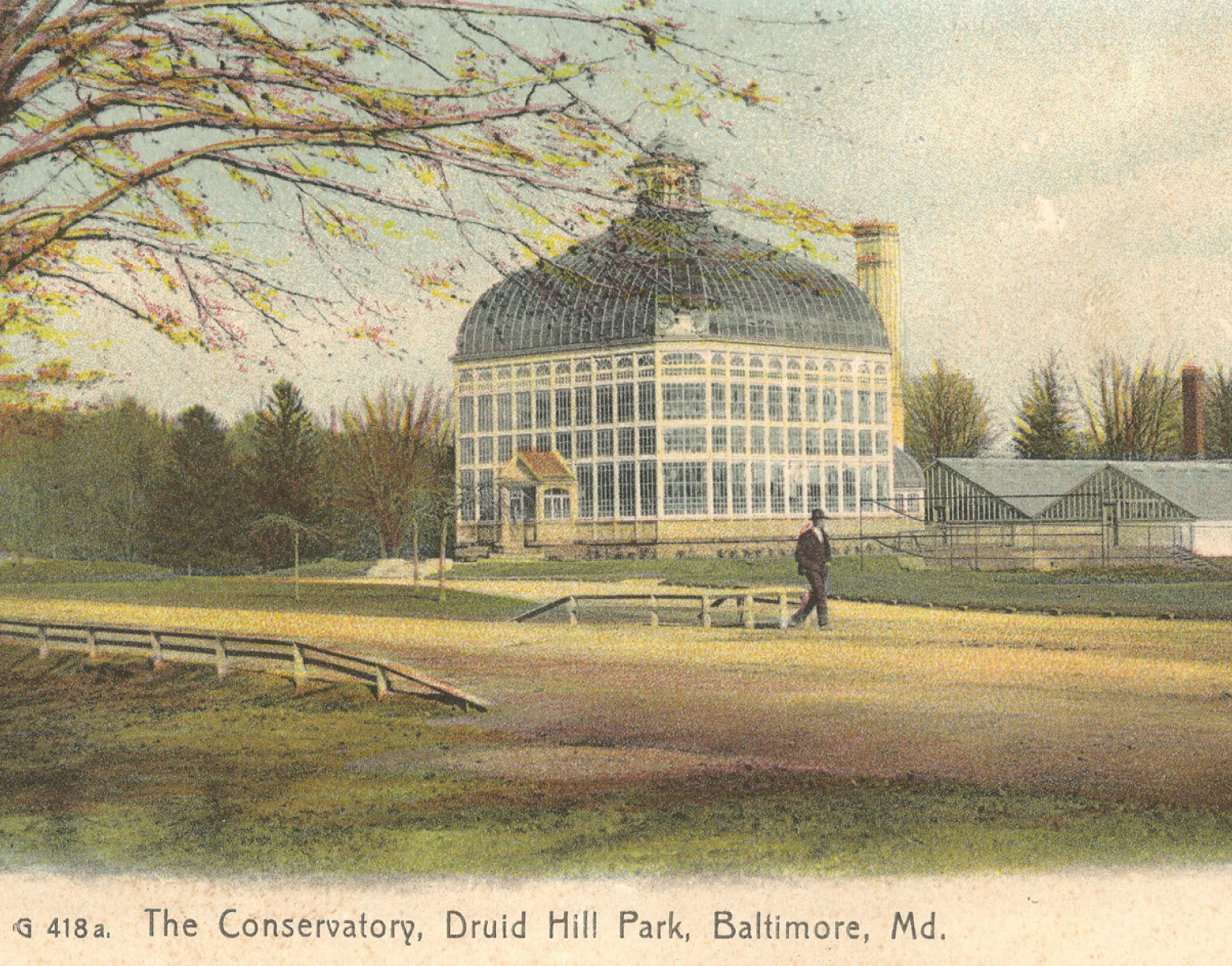
1920's
Three contiguous production greenhouses were constructed.
1948
July 11, 1948, marks a historic day as Black and white tennis players challenge segregation at Druid Hill Park’s tennis courts, next to the Conservatory. Organized by the Young Progressives of Maryland, this pivotal event shapes early Civil Rights efforts.
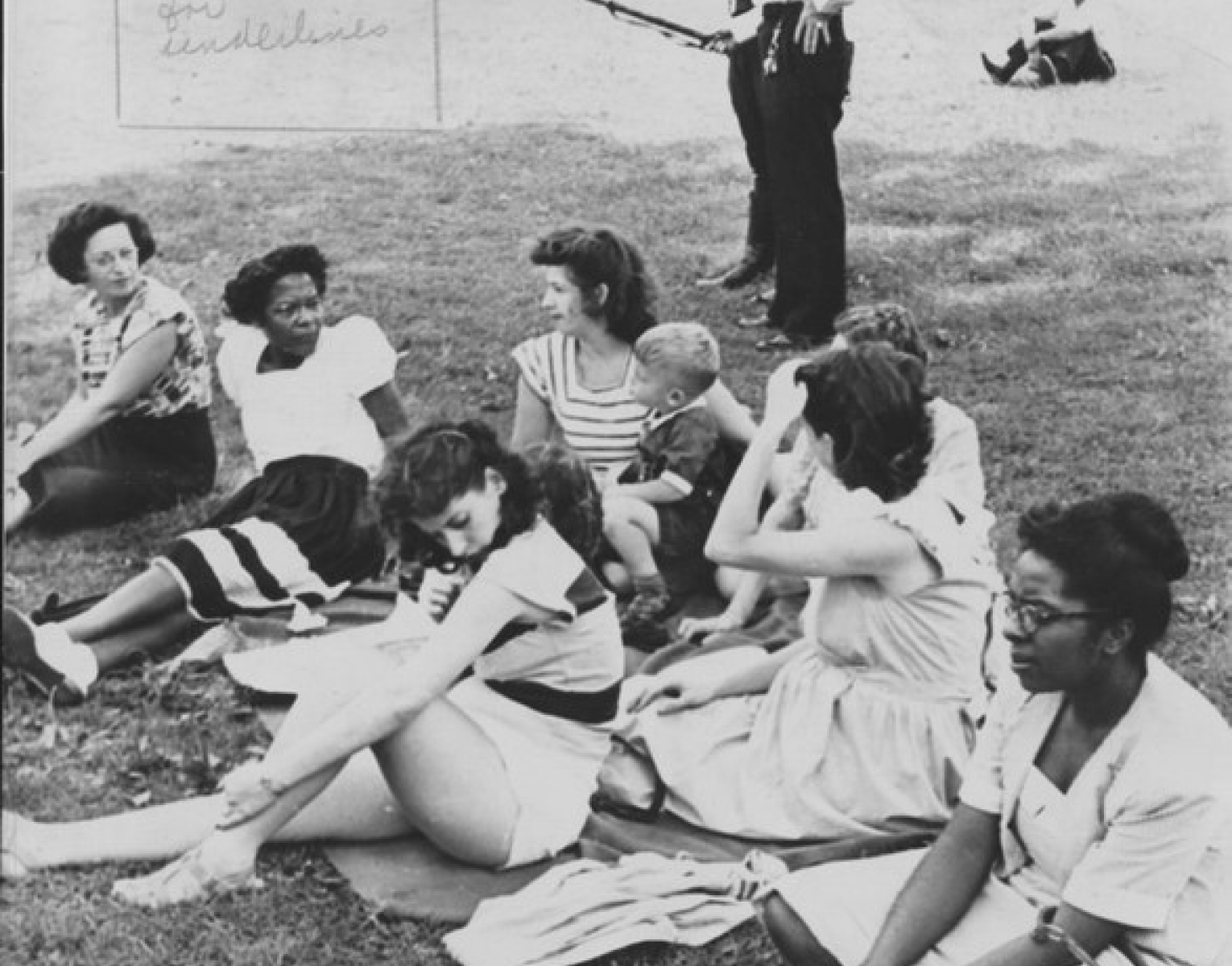
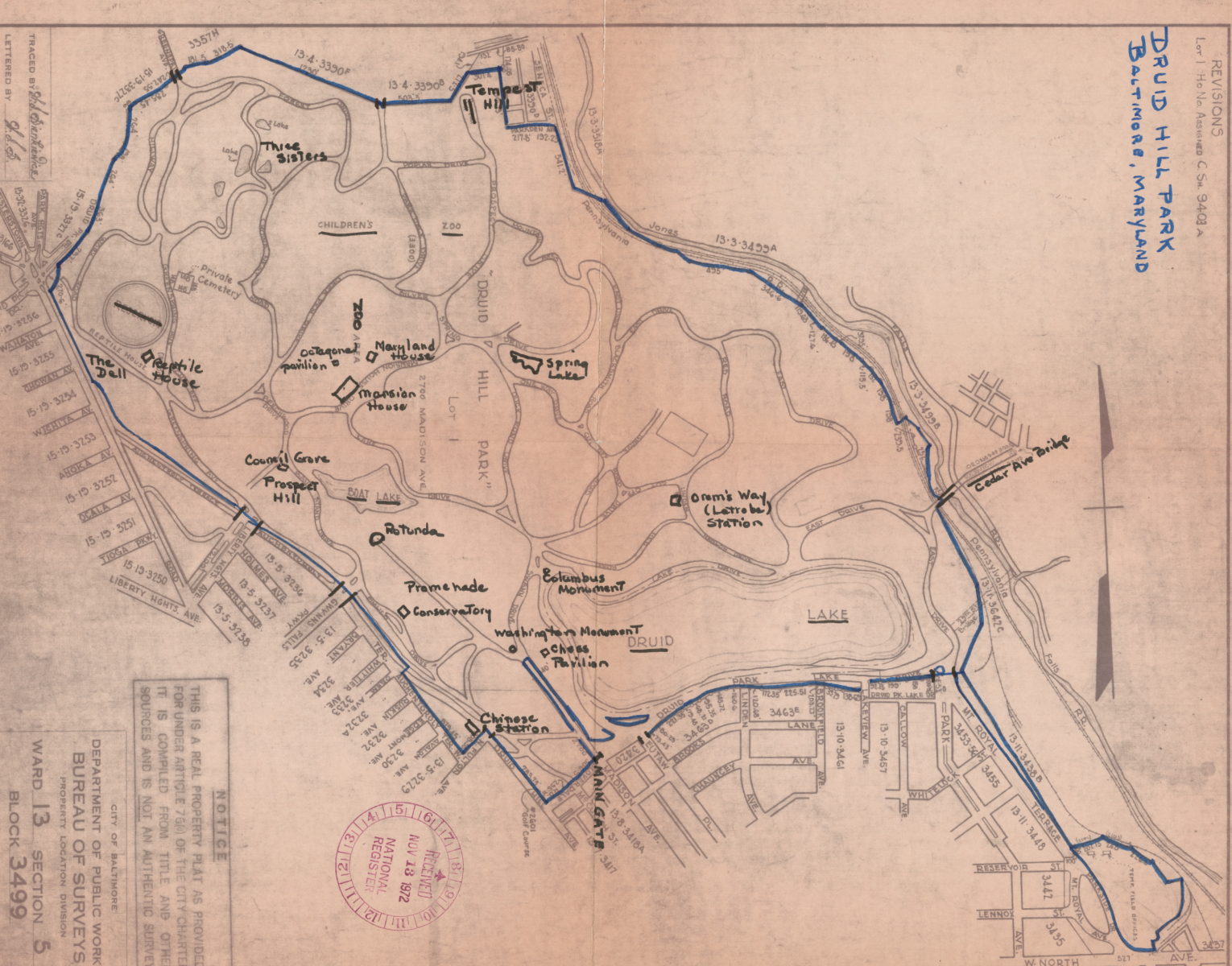
1973
The Druid Hill Park Historic District is added to the National Register of Historic Places. This designation includes the Conservatory.
1989
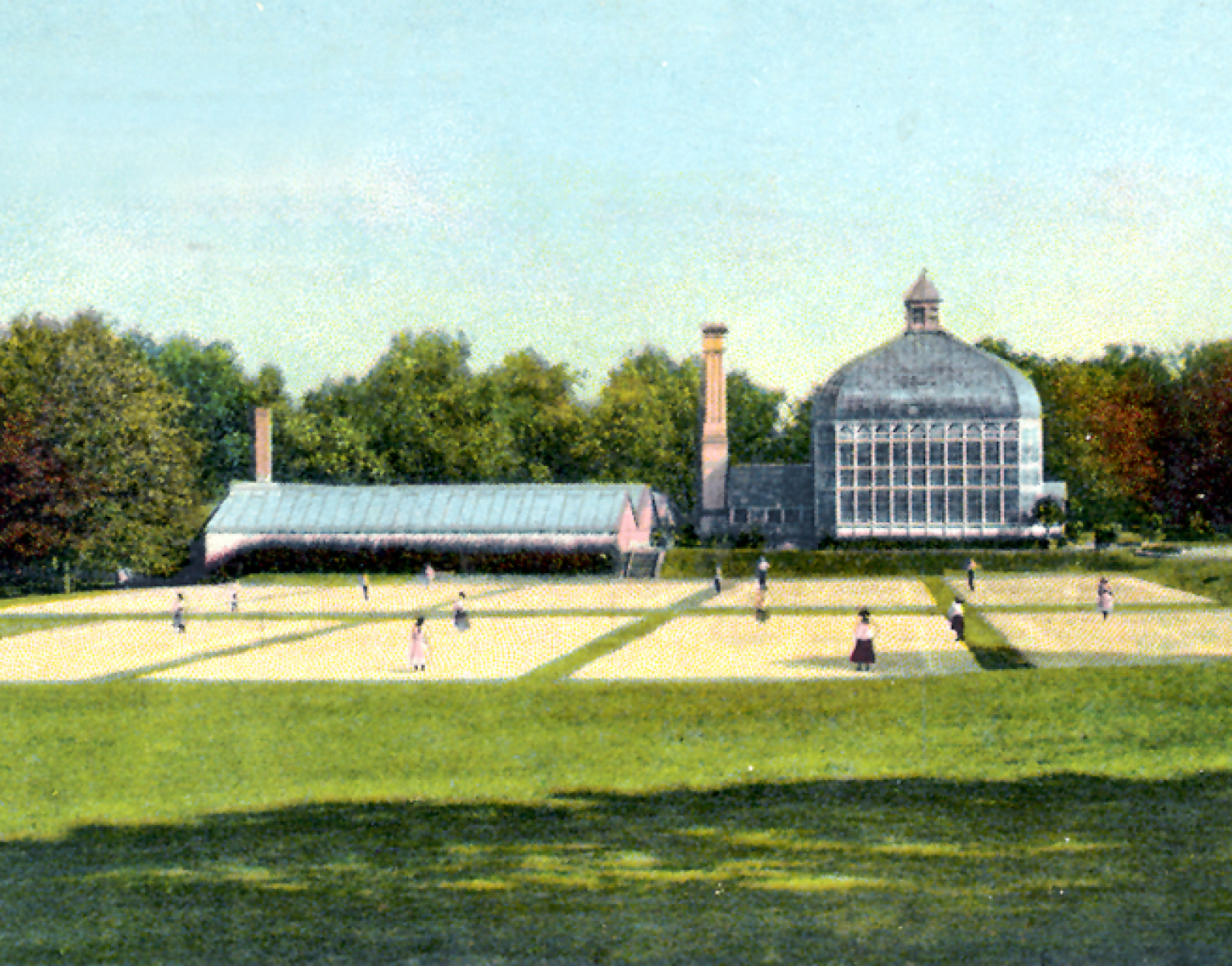
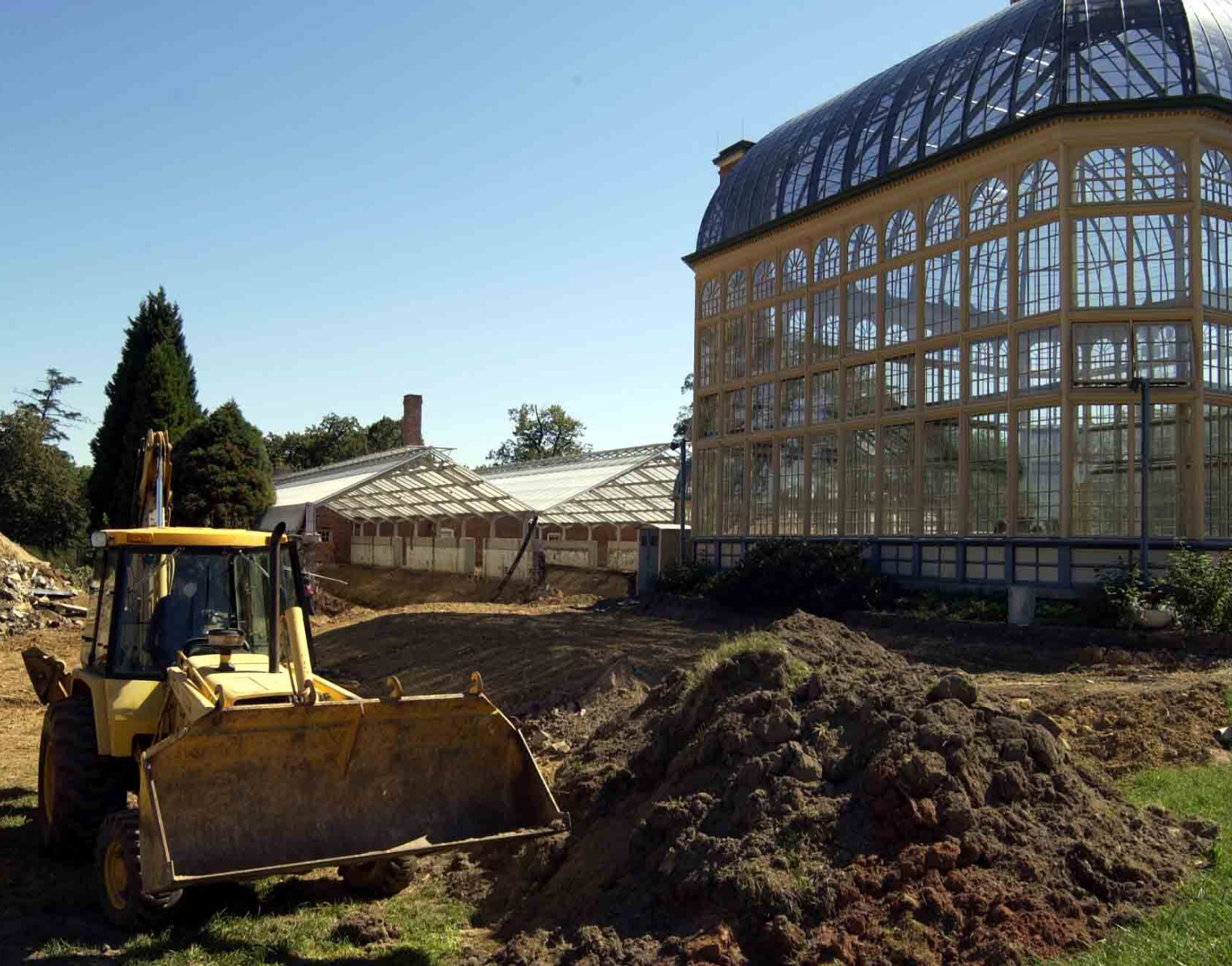
2002-2004
The Conservatory closes to the public in 2002 for a major renovation over two years. Newly redesigned production houses on either side of the original building include a Mediterranean House, a Tropical House, and Desert House. The Conservatory re-opens to the public on September 24, 2004. Shortly after, its official name is changed by law to the Howard Peters Rawlings Conservatory & Botanic Gardens, in honor of the former Maryland House of Appropriations chair Pete Rawlings.
2010
The Conservatory unveils a new Entry Plaza Mosaic entitled “Bright Palms,” designed by internationally acclaimed Baltimore artist Joyce J. Scott.
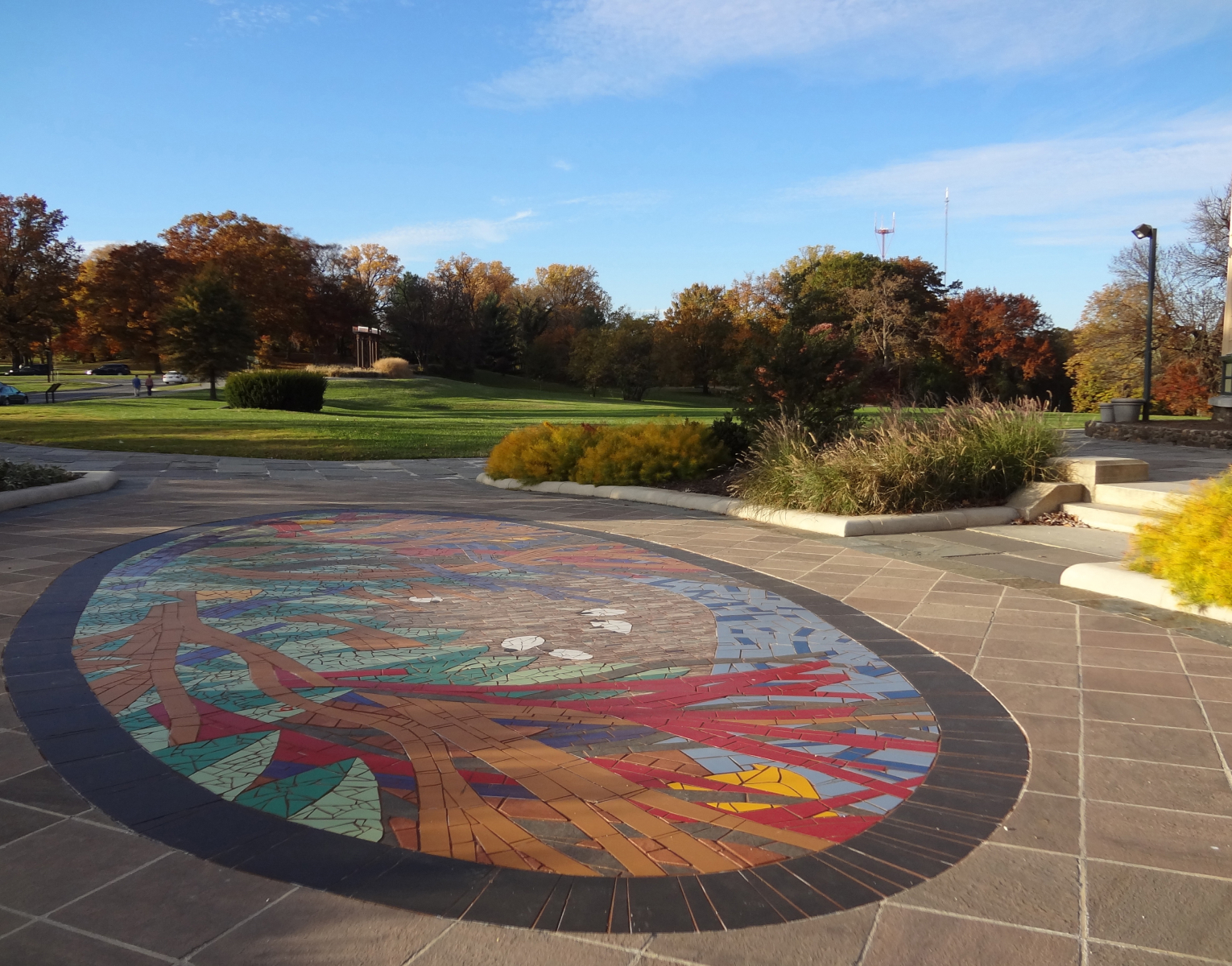
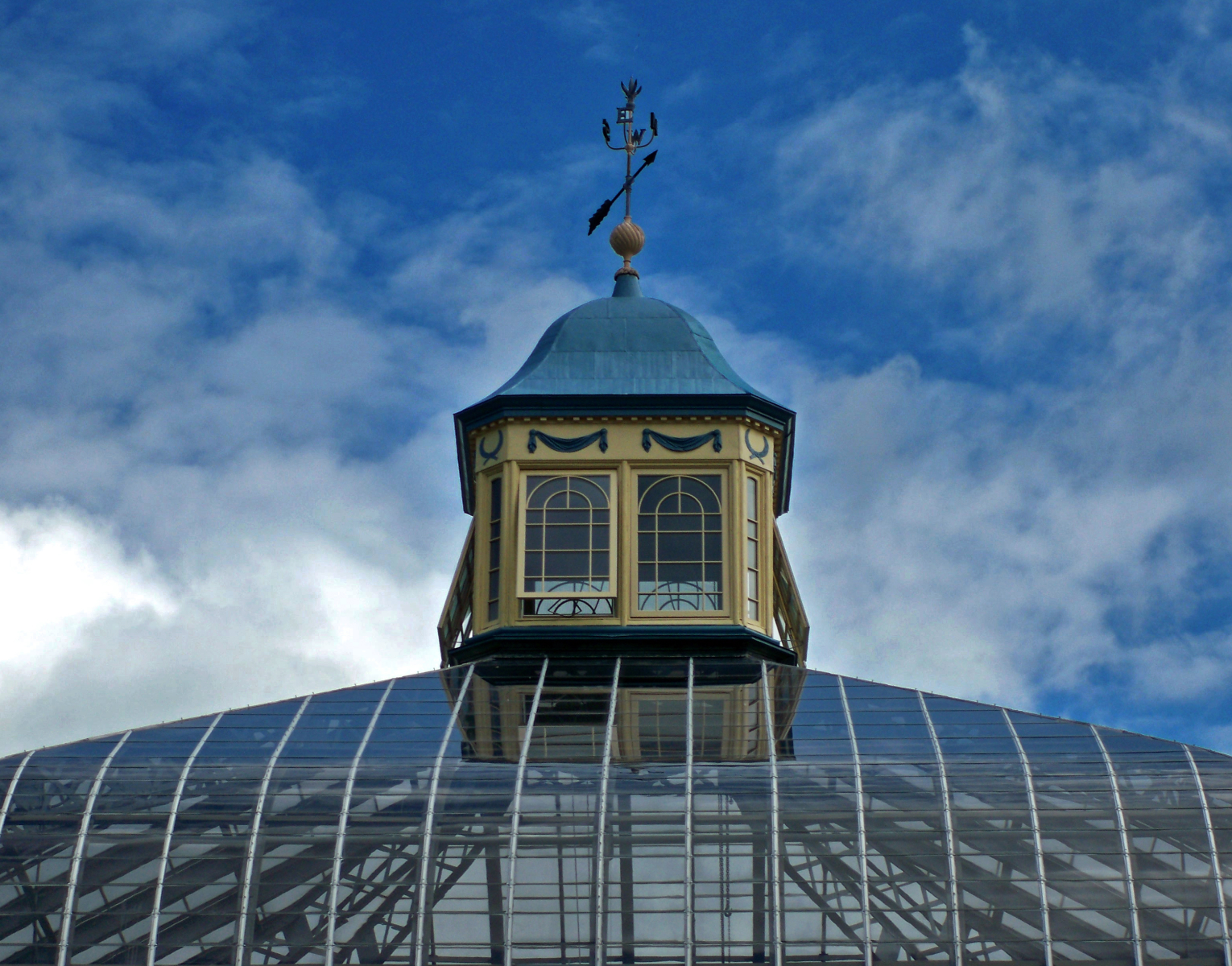
2024
The Conservatory announces a second major renovation, focusing on glass replacement and structural reinforcement in the Palm House.
Get Involved
As in the past, the future of the H.P. Rawlings Conservatory & Botanic Gardens depends on its volunteers and donors. Both play a critical role in maintaining the Conservatory’s mission to enrich the lives of all who visit–as a unique center where education, culture, and nature intertwine.
Here’s how you can get involved.
